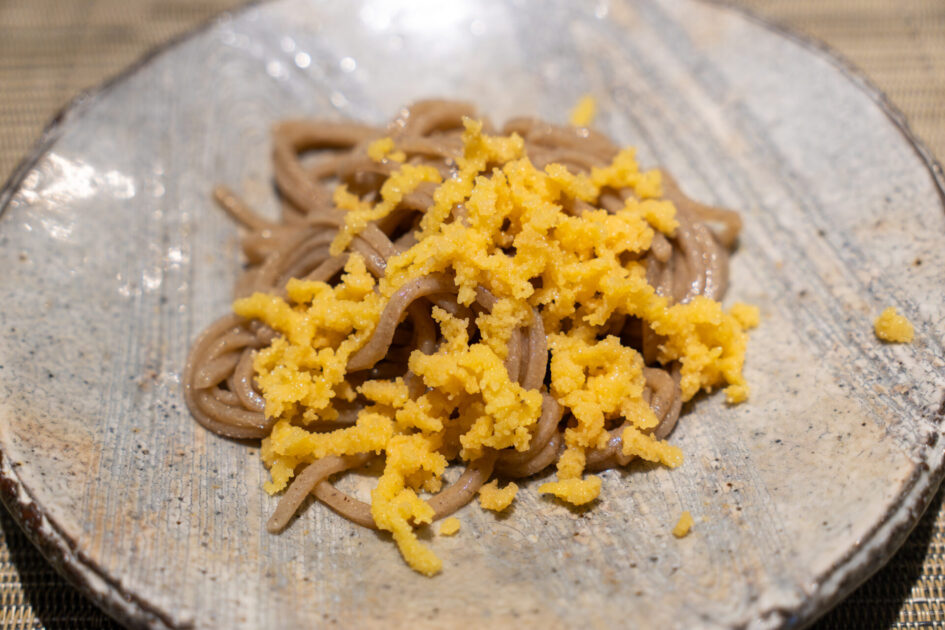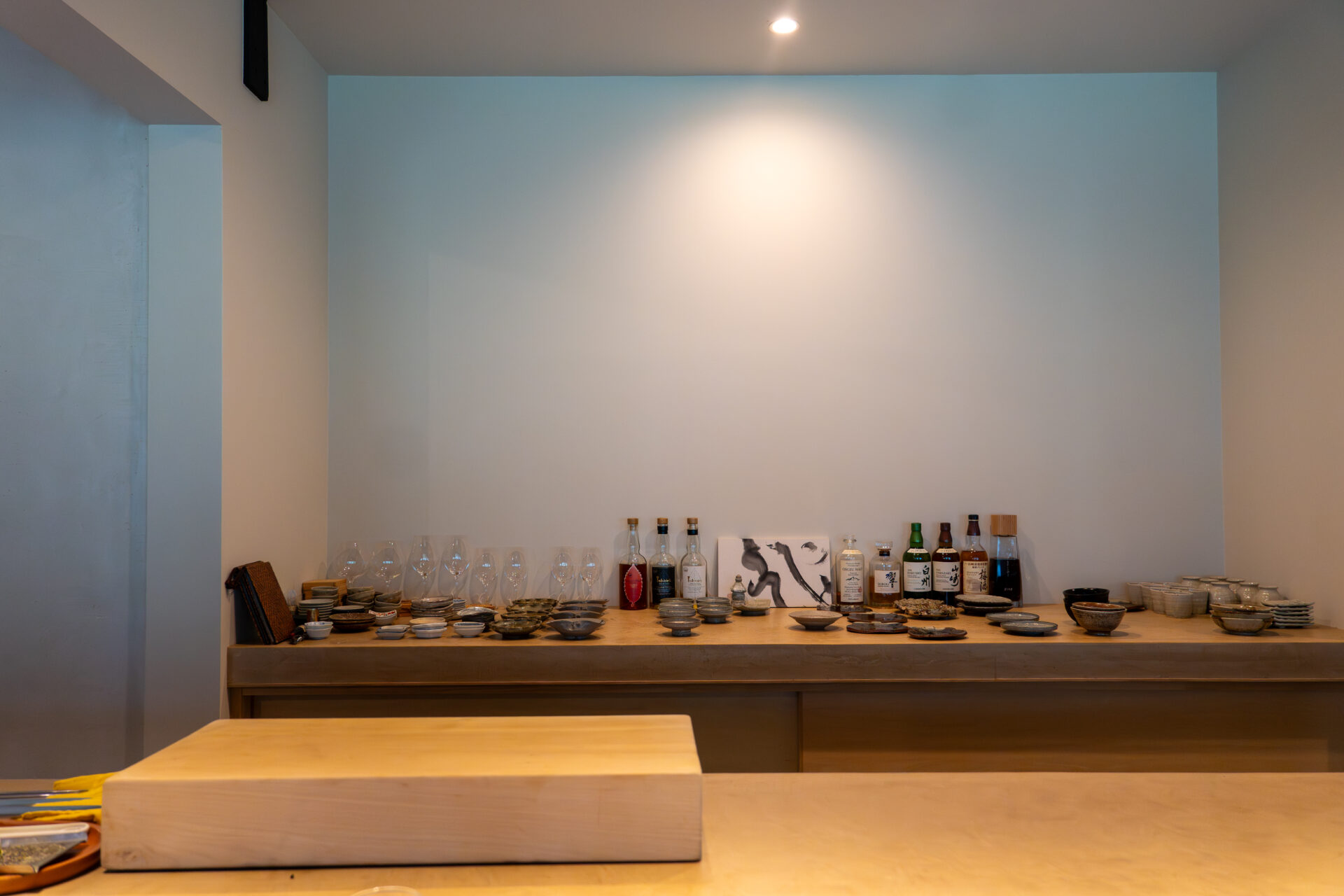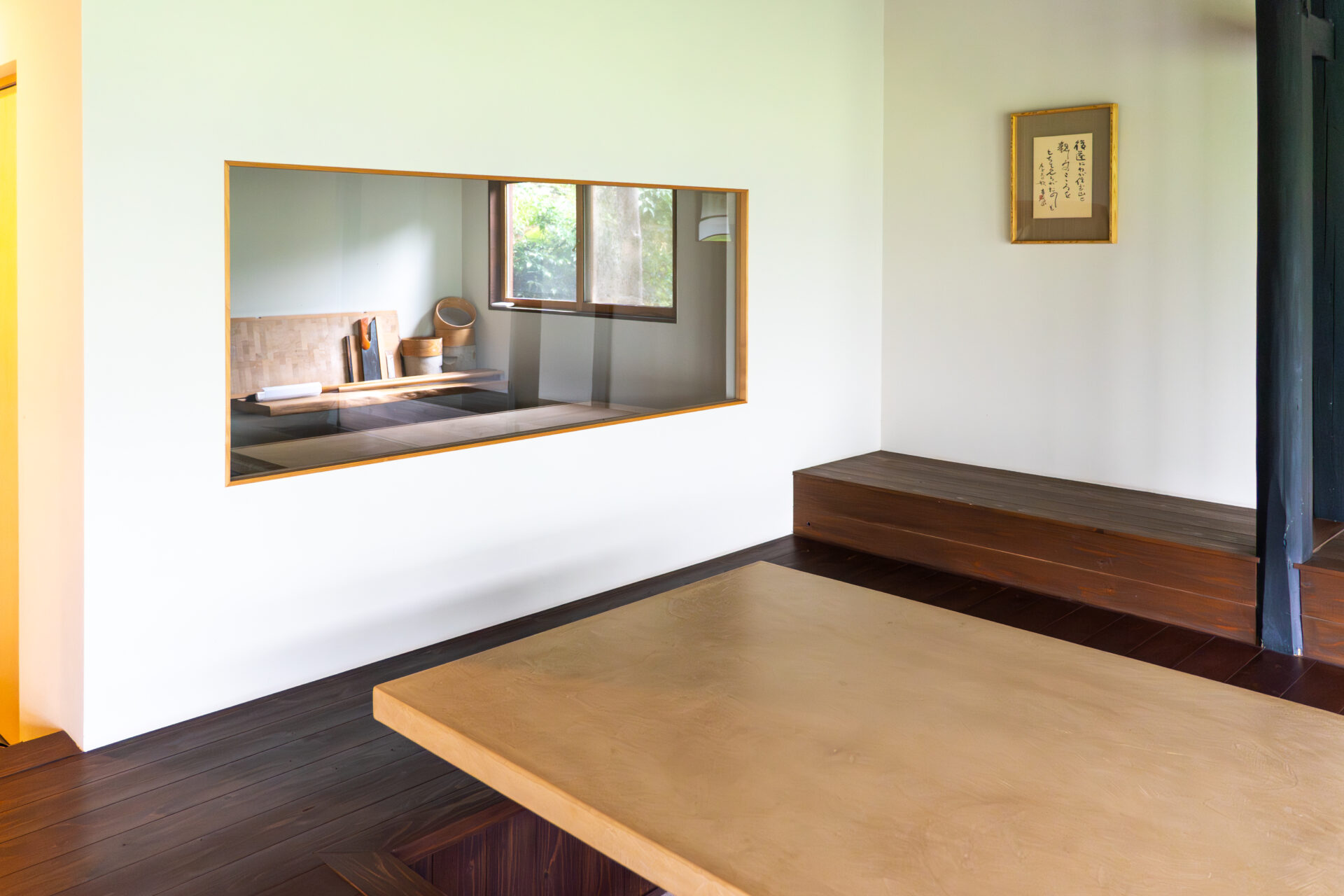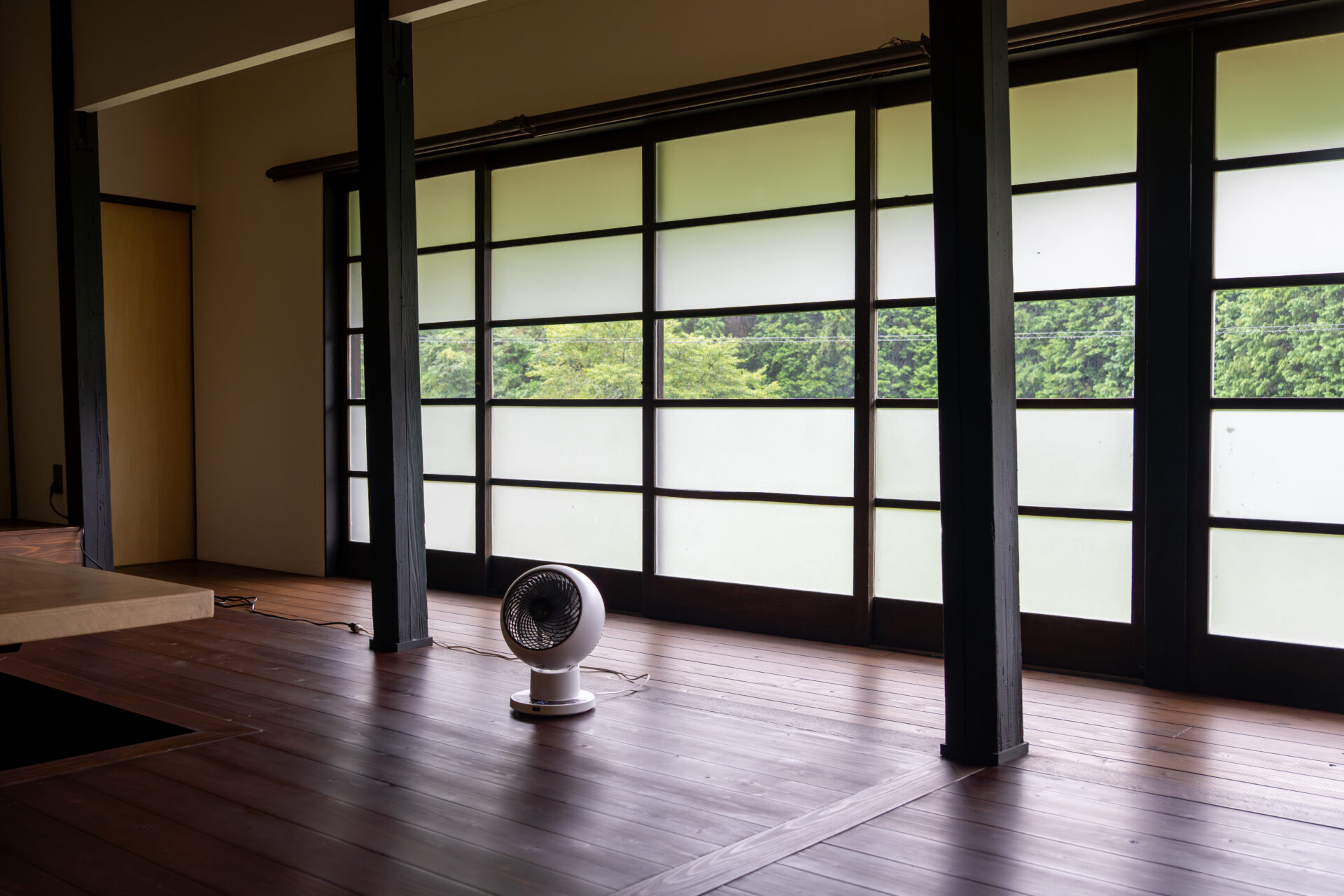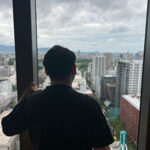CONTENTS
About Soba Rikugō / Bungotakada・Tashibuosaki
About “Soba Rikugō”
Concept
Nestled in the mountains of Bungotakada, within the terraced rice fields of Tashibuosaki—recognized as a Globally Important Agricultural Heritage System (GIAHS)—stands “Soba Rikugō,” a renovated kominka (traditional farmhouse) in a sightseeing area where JR Kyushu’s luxury sleeper train Seven Stars in Kyushu also stops by. It sits like a hidden hamlet you can only reach by carefully following the road. With the changing seasons of the terraced fields as its backdrop, the surroundings are fields and forest, enveloped in quiet. The moment you open the door, the bustle of the outside world recedes, and an atmosphere takes over that lets you sink quietly into the soba and the cuisine.
Upholding a strict reservation-only policy, it welcomes just one party a day or a very limited number of guests. A special course is offered: at lunch, ¥12,000 for 1–4 guests; at dinner, ¥20,000 per person. Using unhulled buckwheat (gen-soba) of the Maruoka heirloom variety from Gifu, aged for over a year to draw out depth of flavor, then finished at 60% hydration, the noodles achieve a distinctive spring and aroma. Centered on this soba, carefully selected ingredients, meticulous prep, and aging techniques layer together, with a clear intention from the chef in each plate. Here, the experience is not only about the soba itself but a “course built through soba,” encompassing the ingredients and the cooking background—time that “exists precisely because you came to this place.”
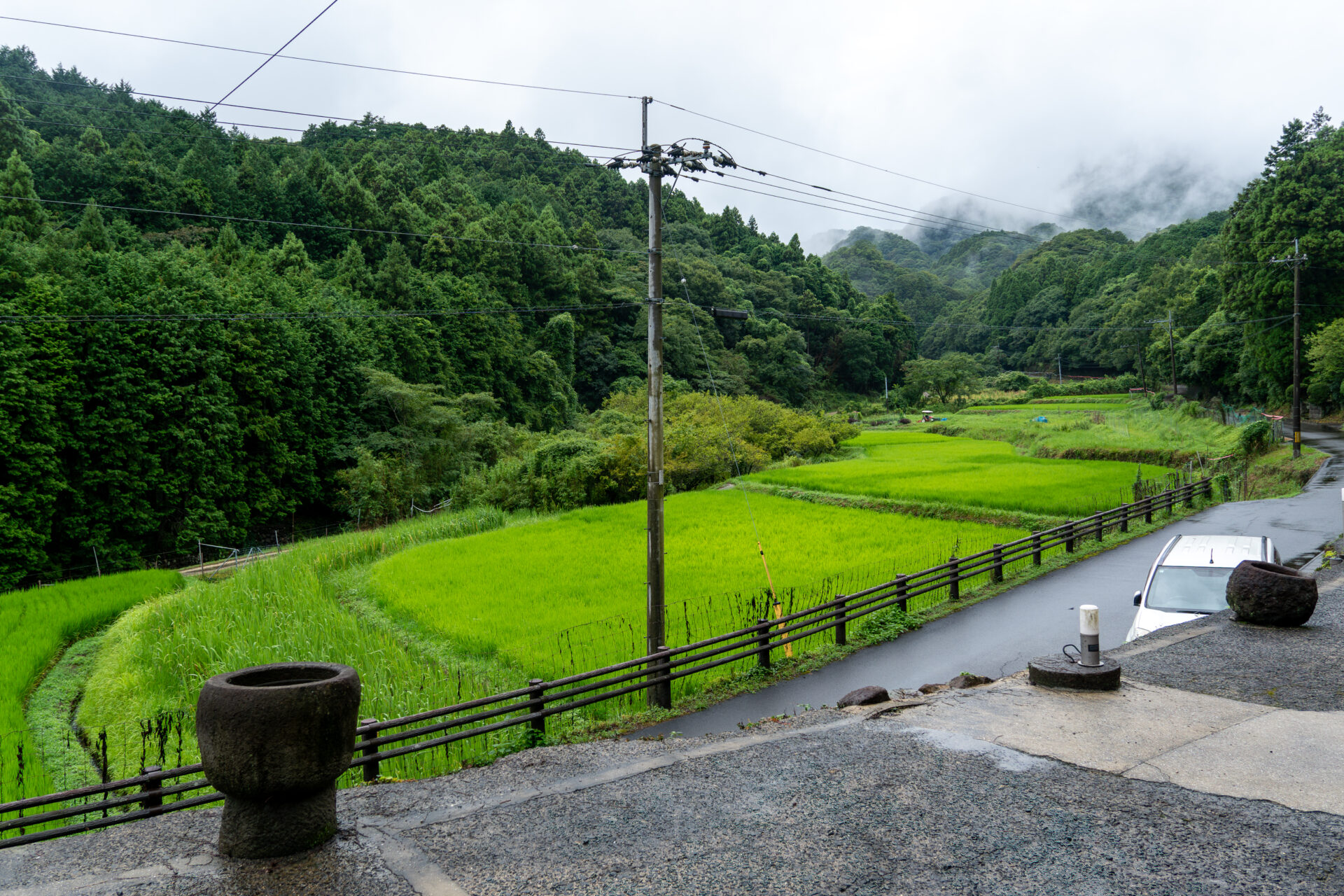
About the Chef
Owner-chef Tomoya Matsuzaki (read: Matsuzaki) worked in Tokyo’s apparel industry before teaching himself the way of soba. He trained with the “Daruma Group” led by master Takahashi, initially serving ni-hachi soba (80% buckwheat, 20% wheat). Later, at “Soba no Sato Fukagaya Food” in Sakahogi, Gifu, he learned the authentic “Shin-soba-ryū” method of making soba—the spirit of that pursuit is vividly reflected in Rikugō today. On the culinary side, a chef named Matsuo—who spent time in France living and working alongside top chefs like Chef Kishida of “Quintessence” and Chef Sato of “Passage 53” and “BLANC”—taught Matsuzaki the fundamentals. The foundations of prep, heat control, and flavor composition inherited from Matsuo permeate the entire course at Soba Rikugō, resonating with soba-making technique to create a uniquely coherent dining experience. Furthermore, the chef personally fishes, bids at markets, and even helps on farms; this hands-on approach—from sourcing to cooking—forms the backbone of the restaurant.
Reputation
While “Soba Rikugō” does not appear to have official awards from specific contests or guidebooks, its presence and reputation are widely known. Symbolic of its standing is the record of serving soba aboard JR Kyushu’s luxury sleeper train Seven Stars in Kyushu—proof of ability worthy of a truly special travel moment.
On review sites like Tabelog, it holds around 3.5–4.0, and visitors often praise it with comments like “carefully selected ingredients and astonishing juwari (100% buckwheat) soba” and “well worth the trip into the mountains.” Local media and gourmet blogs present it as “refined sobamae in a pastoral landscape,” emphasizing not only the food but the value of the location and the experience.
Even without outward “awards,” Rikugō’s steady exploration and sincerity leave an imprint on those who visit, earning strong support. Quietly, it’s becoming recognized as “a restaurant worth going out of your way to reach.”
Dining Prelude
Exterior & Entrance
A rustic yet powerful exterior.
The wooden kominka set quietly along the banks of the terraced fields looks as though it has aged with the color of the paddies themselves. The exterior bears a deep, timeworn brown, and the tiled roof seems to speak softly of the years.
A warmly welcoming entrance.
A wooden sliding door sits at center, with softly glowing andon lanterns on either side, quietly inviting you in. A hand-carved sign hangs at the entry, the restaurant name written in an organic script that conveys the warmth of craftsmanship.
A scene where nature and architecture lean into each other.
Behind the building lies forest green; in front, terraced fields and farms. There’s harmony between the gentle slope and the view, and the carefully preserved human touch suggests “time found only here.”
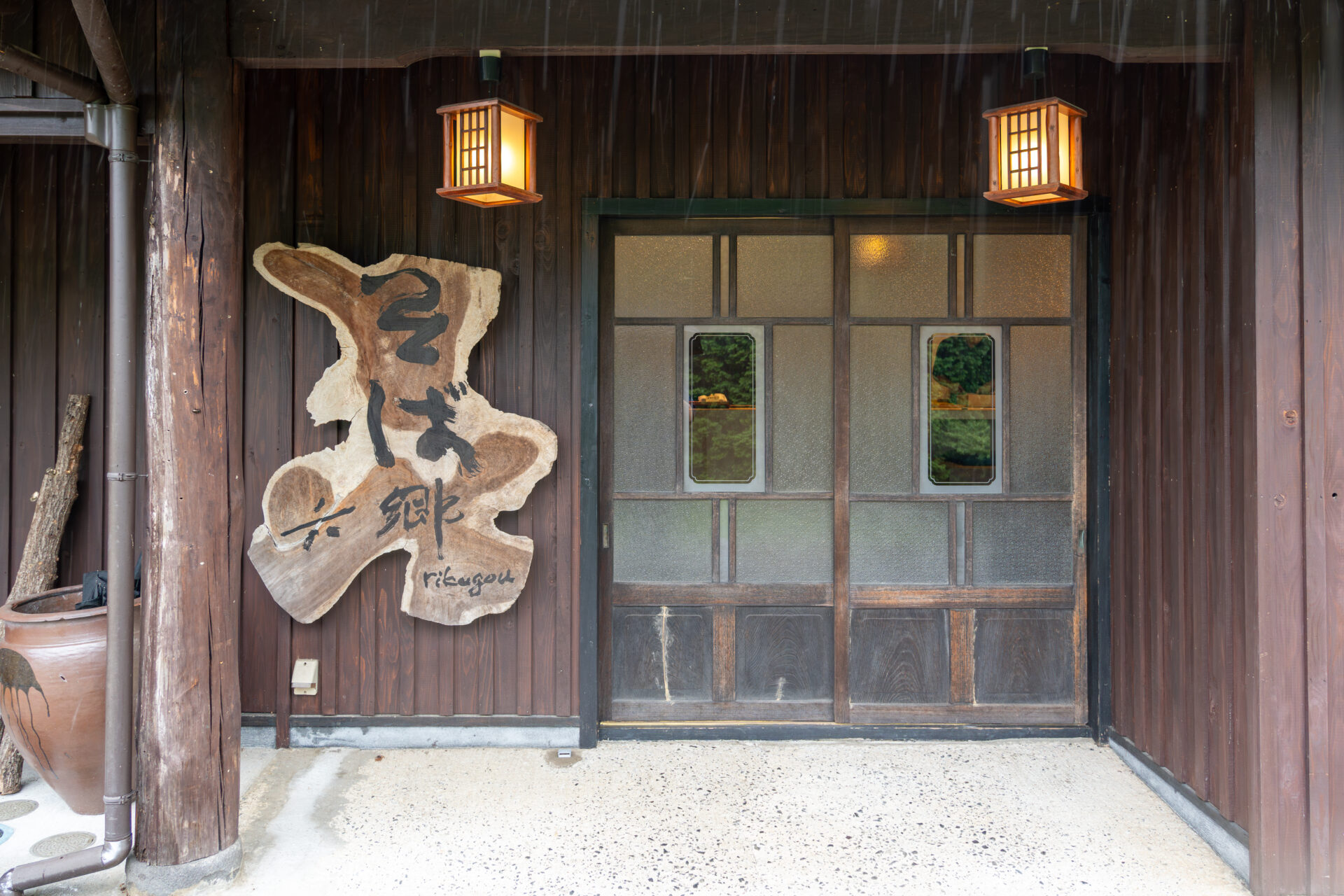
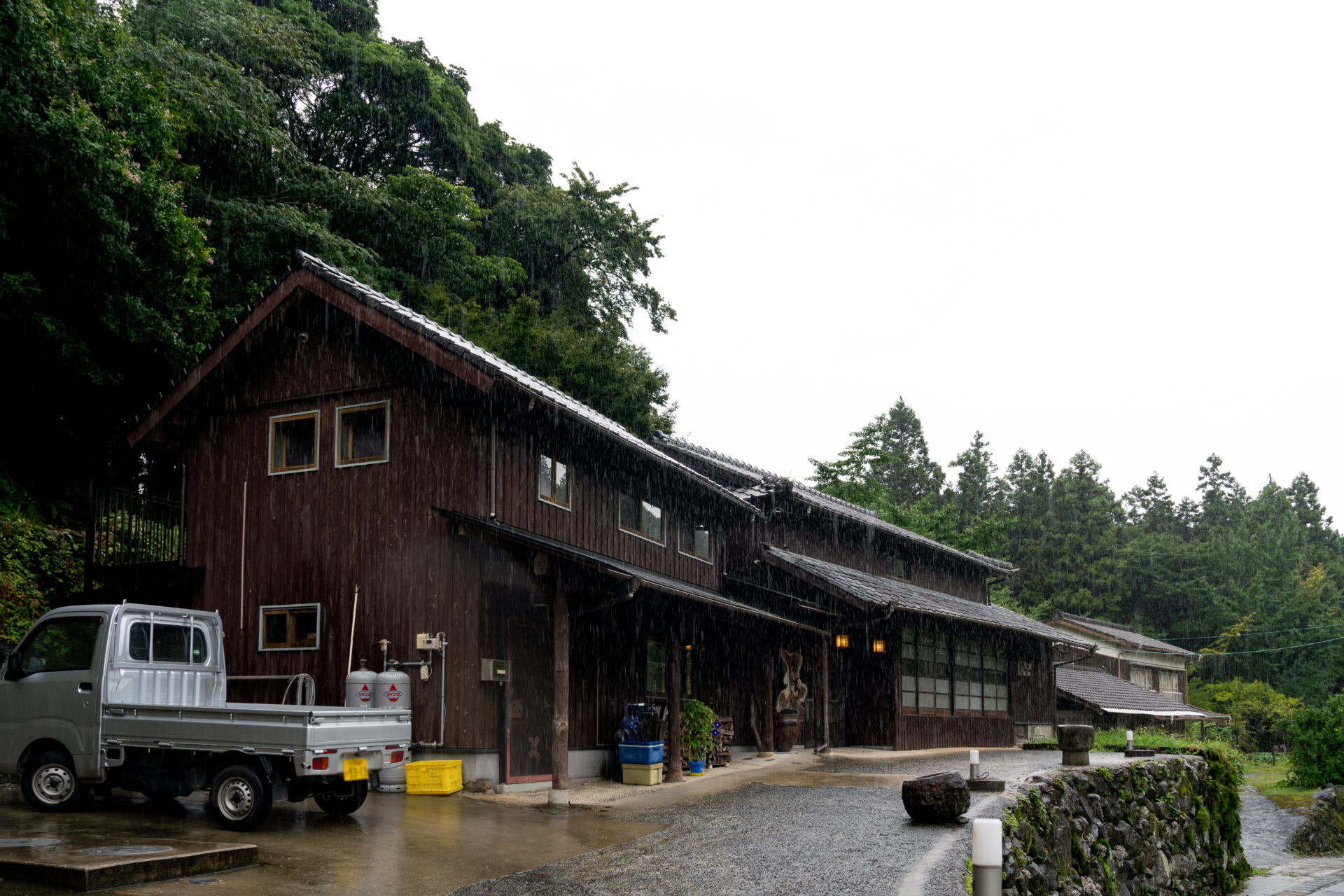
Dining Space
The dining space at “Soba Rikugō” balances the calm of a traditional farmhouse with modern functional beauty.
Menu Presentation
The current course structure at “Soba Rikugō” is clearly divided between lunch and dinner.
Lunch Course starts between 12:00 and 16:00 and is available for 1–4 guests. The fee is a flat ¥12,000, with a full course built around soba from appetizers through dessert.
Dinner Course starts between 17:00 and 19:00. For solo diners, it’s ¥20,000; for 2–4 guests, ¥15,000 per person. Compared with lunch, it offers even more courses and complexity, with no compromise in the quality of ingredients or labor.
Both courses are strictly by reservation, and limiting the number of seats preserves a tranquil atmosphere and a focused dining experience. Naturally, menus change with the seasons and procurement, but they are also tailored to guests’ preferences and past visits—a hallmark of Rikugō. The more you visit, the more plates are composed just for you, etching your relationship with the restaurant into the flavors. At the core are unhulled Maruoka buckwheat aged for over a year and a 60% hydration method that maximizes aroma and spring. Each visit layers a different structure and story onto that core.
Starter Drink
To open the course, we chose a soda made with a special ginger syrup from “Yāyamaya.” With no added water—just naturally grown ginger and kagoshima-made sensōtō (washed coarse sugar)—the dense syrup is topped with well-chilled carbonation. The rising fragrance and the ginger’s bite sweep down the throat, quickly giving way to refreshment. Grown by a farmer in Kitsuki, Ōita, who handles everything from soil work to harvest and processing, this ginger is, in the chef’s words, “on a different level.” True to that claim, its vivid aroma and deep sweetness deliver a clear presence in the glass and raise expectations for the story to come.
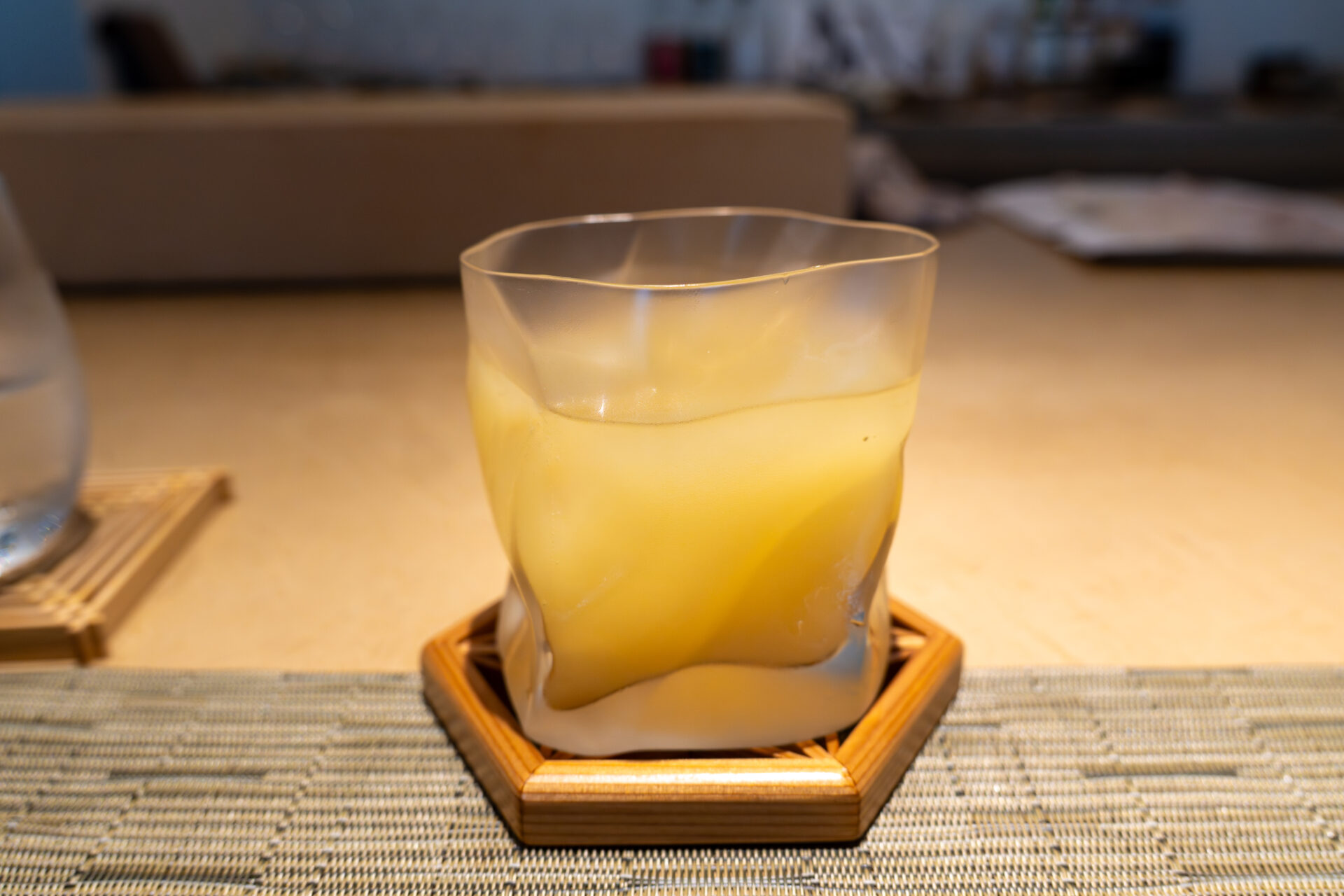
Dishes We Actually Tasted
Edamame
First came edamame grown with natural cultivation by Hikari Farm. The chef goes to the fields himself and harvests only what’s needed for the day. Interestingly, he photographs the harvest quantity right there and settles payment that way—a sign of trust with the farmer and a way to prevent waste. Preparation is extremely simple: just boiled with salt. Bite in, and sweetness and a faint green aroma fill your mouth, highlighting the ingredient’s inherent strength.
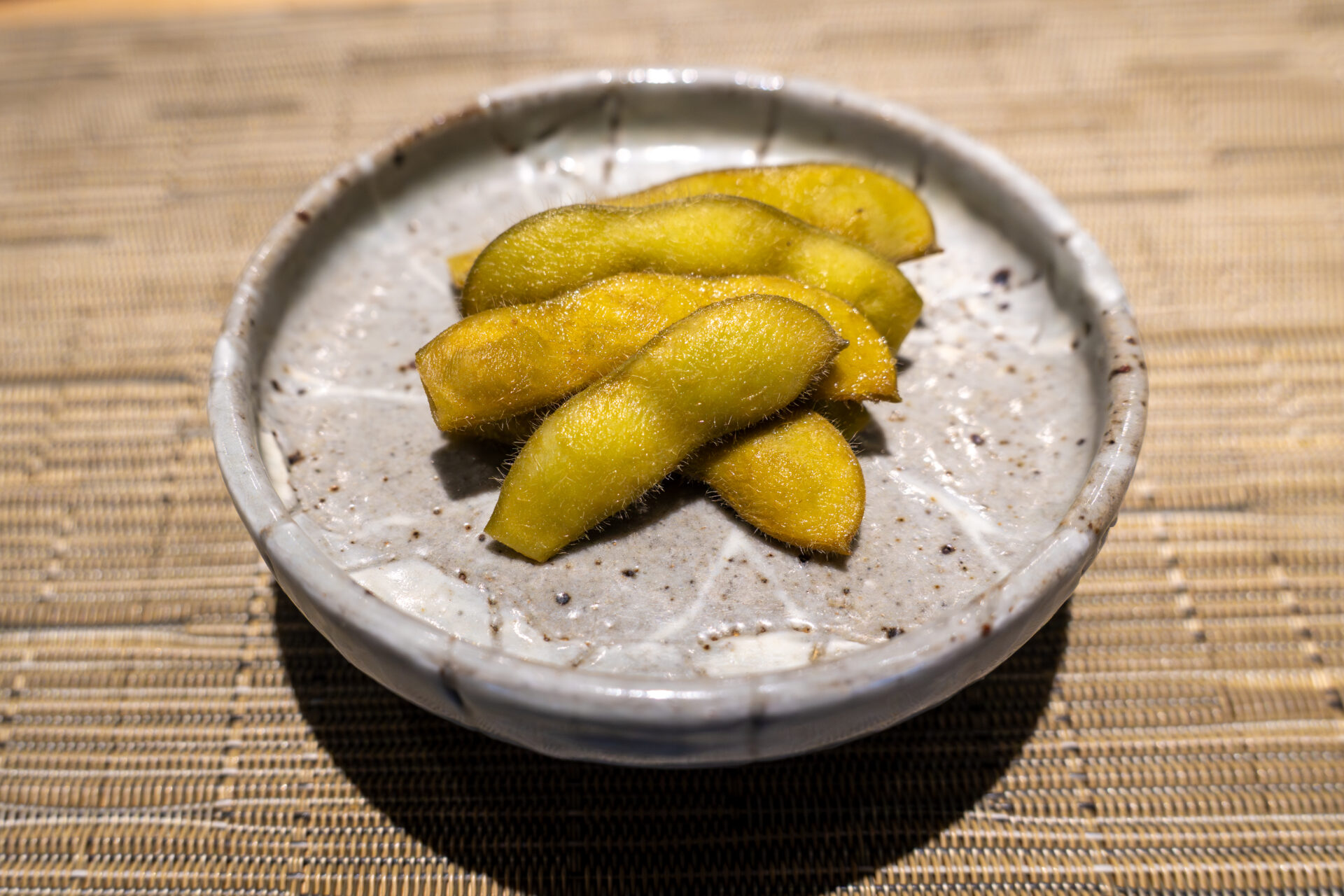
Tabako-nishi (Whelk)
Next was tabako-nishi, notable for its multicolored shells. Its faint bitterness unfolds as you chew—said to be reminiscent of “tobacco,” hence the name. The doneness is spot-on: the flesh is moist and tender, releasing more umami with each bite. The balance of bitterness and savoriness was pleasing and gently lifted the appetite.
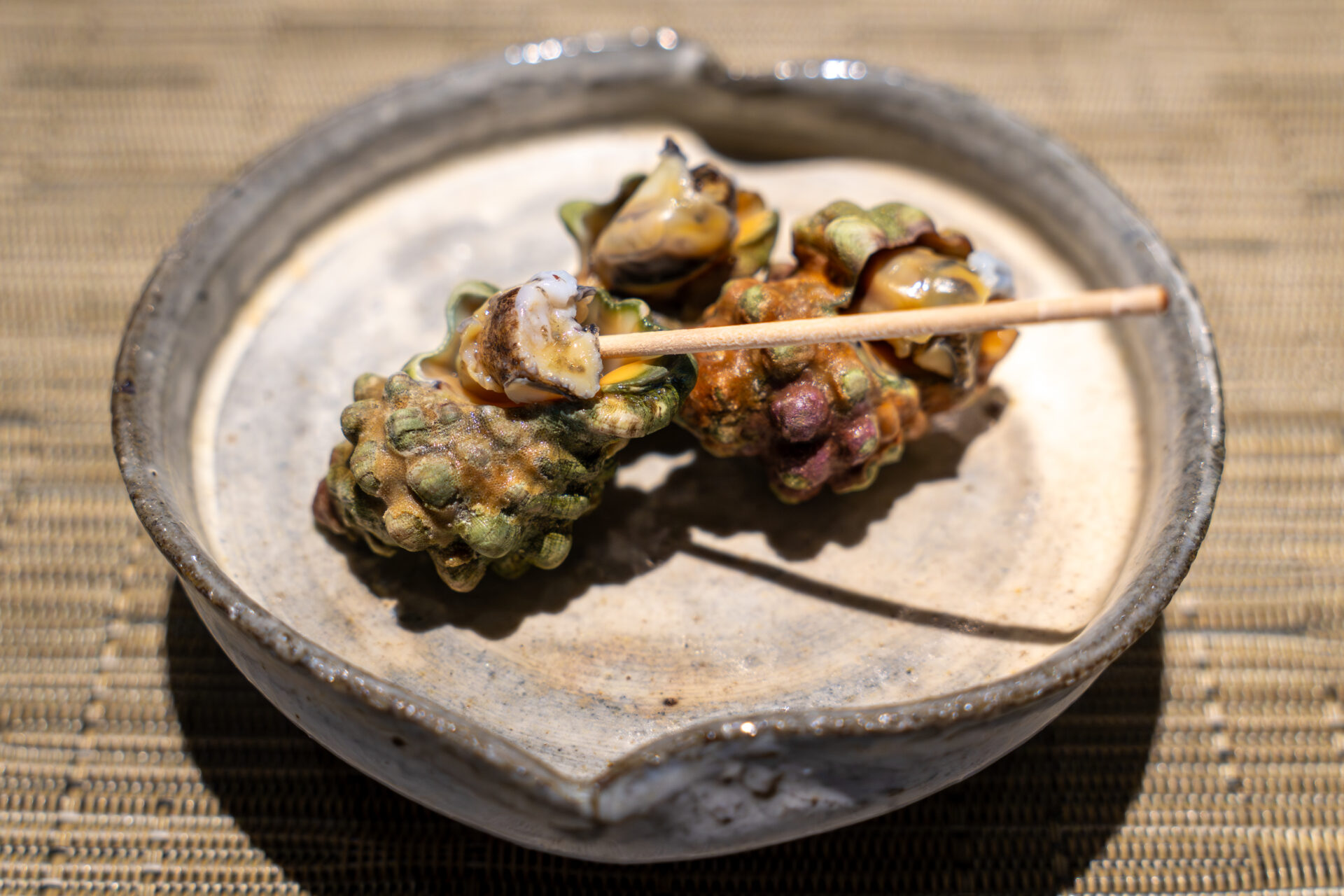
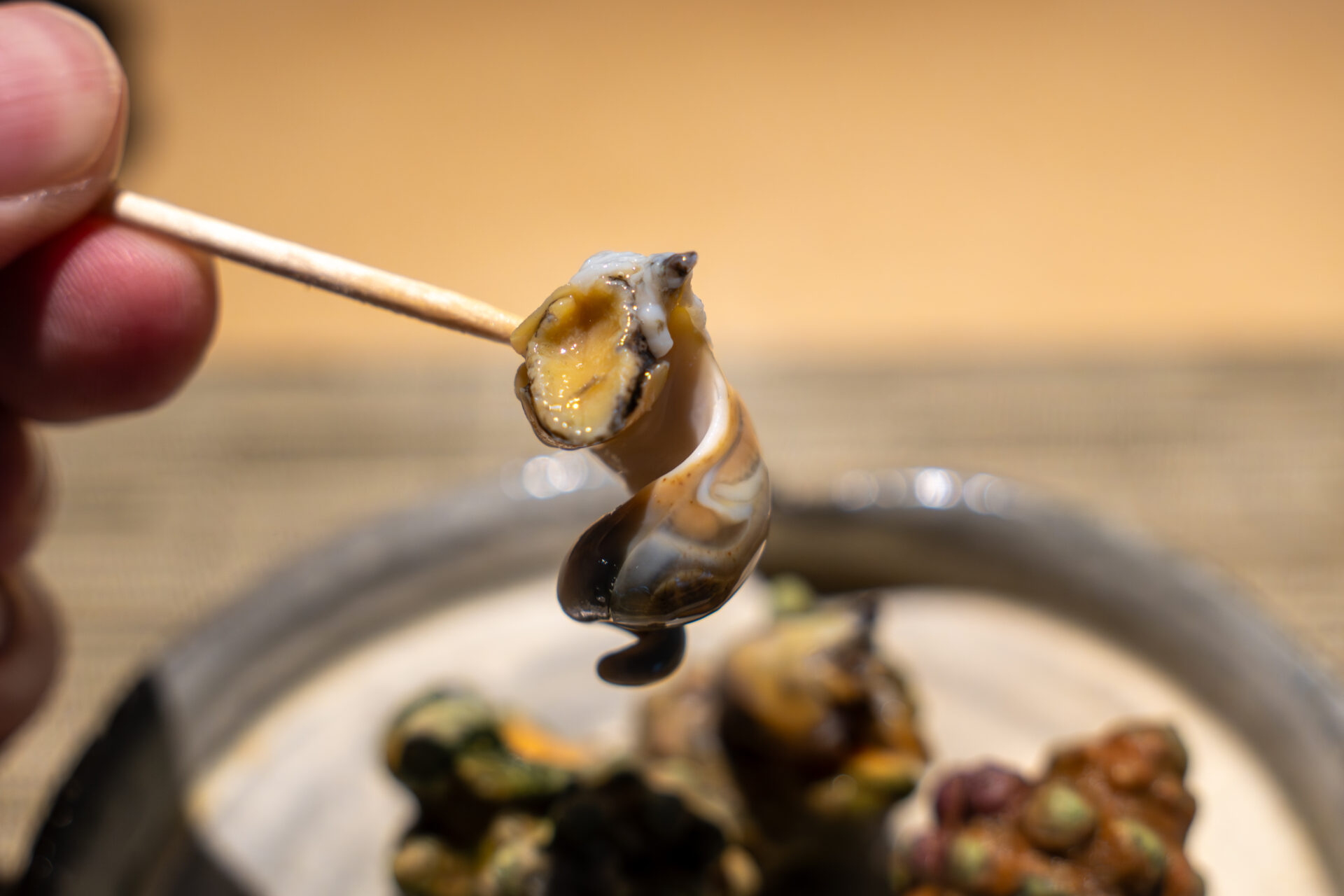
Karasumi Soba
A plate of coarsely ground soba topped with a soft flurry of golden karasumi (mullet roe). It’s cured half-soft in a brine made by combining sake and white wine in equal parts to match the soba. The supple texture and gentle salinity lift the noodle’s aroma, and umami blooms as you chew. Simple, yet imbued with time and intention.
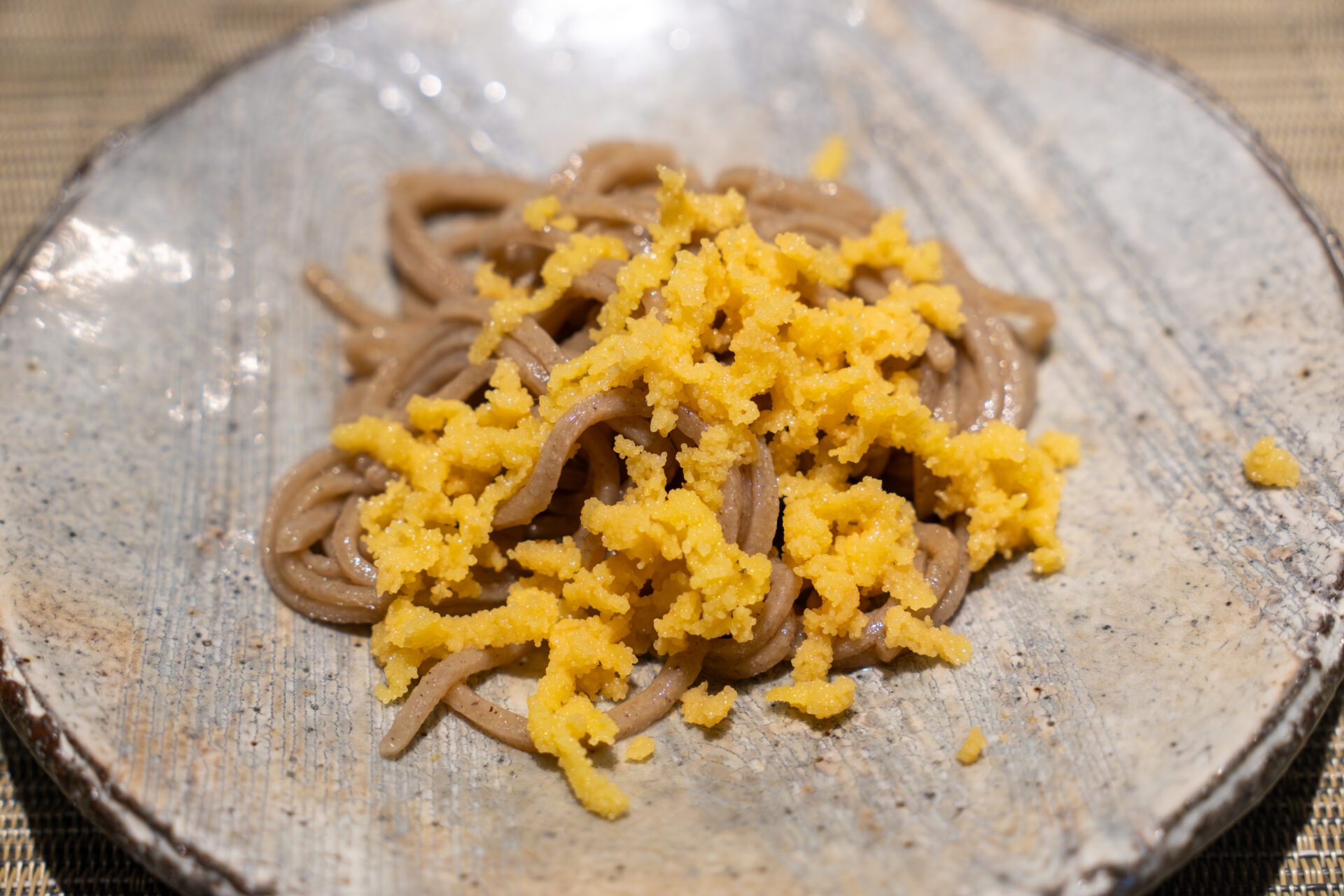
Assorted Fish Livers
Livers from white-fleshed fish like scorpionfish (tora-uo), grunt (isaki), and Japanese whiting (kis) are combined and dressed with soy sauce brightened by fresh sanshō. The livers’ rich umami meets the spice’s citrusy fragrance and faint tingle, leaving a deep afterglow. Occasional pops of sanshō berries tighten the whole, making it an alluring sake accompaniment.
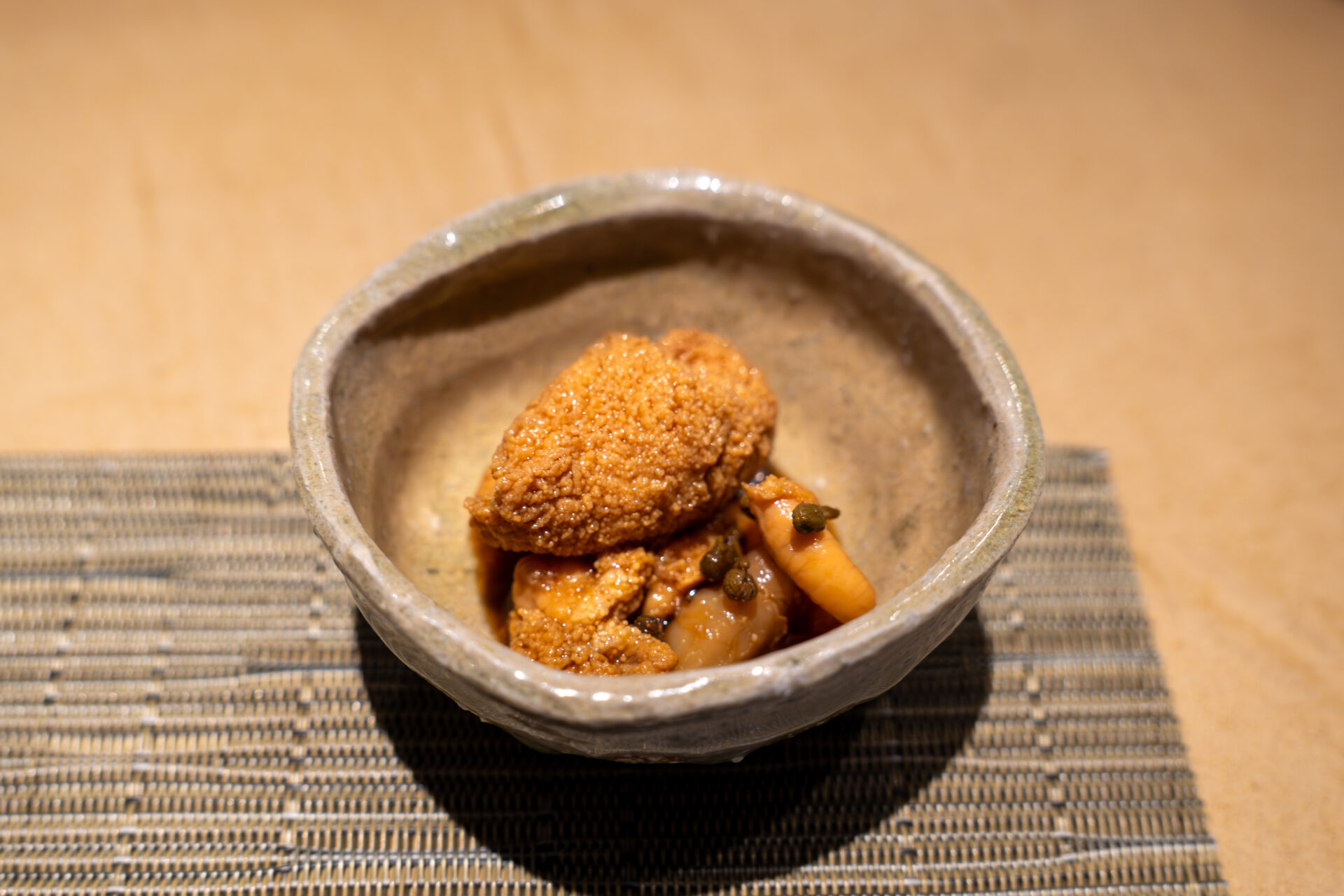
Kabosu Soba
A bowl bright with thin slices of kabosu floats across the surface—visually striking kabosu soba. A slightly sweet dashi meets the citrus’s fresh fragrance, which wafts through your nose with each sip. The noodles keep a pleasant chew while taking on the broth, then loosen delicately in the mouth. The gentle sweetness and citrusy lift leave a light finish—an easy, refreshing bowl even in hot weather.
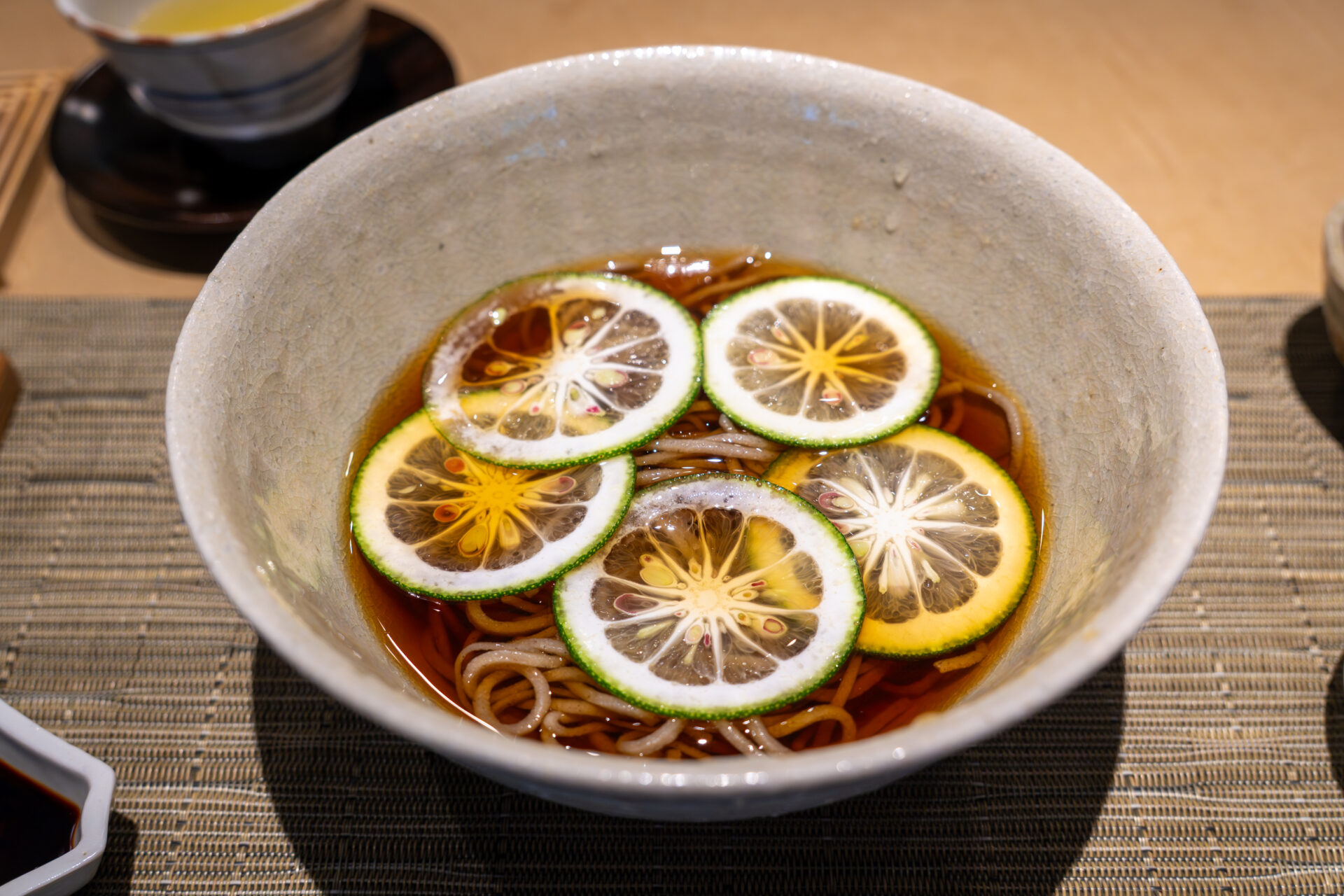
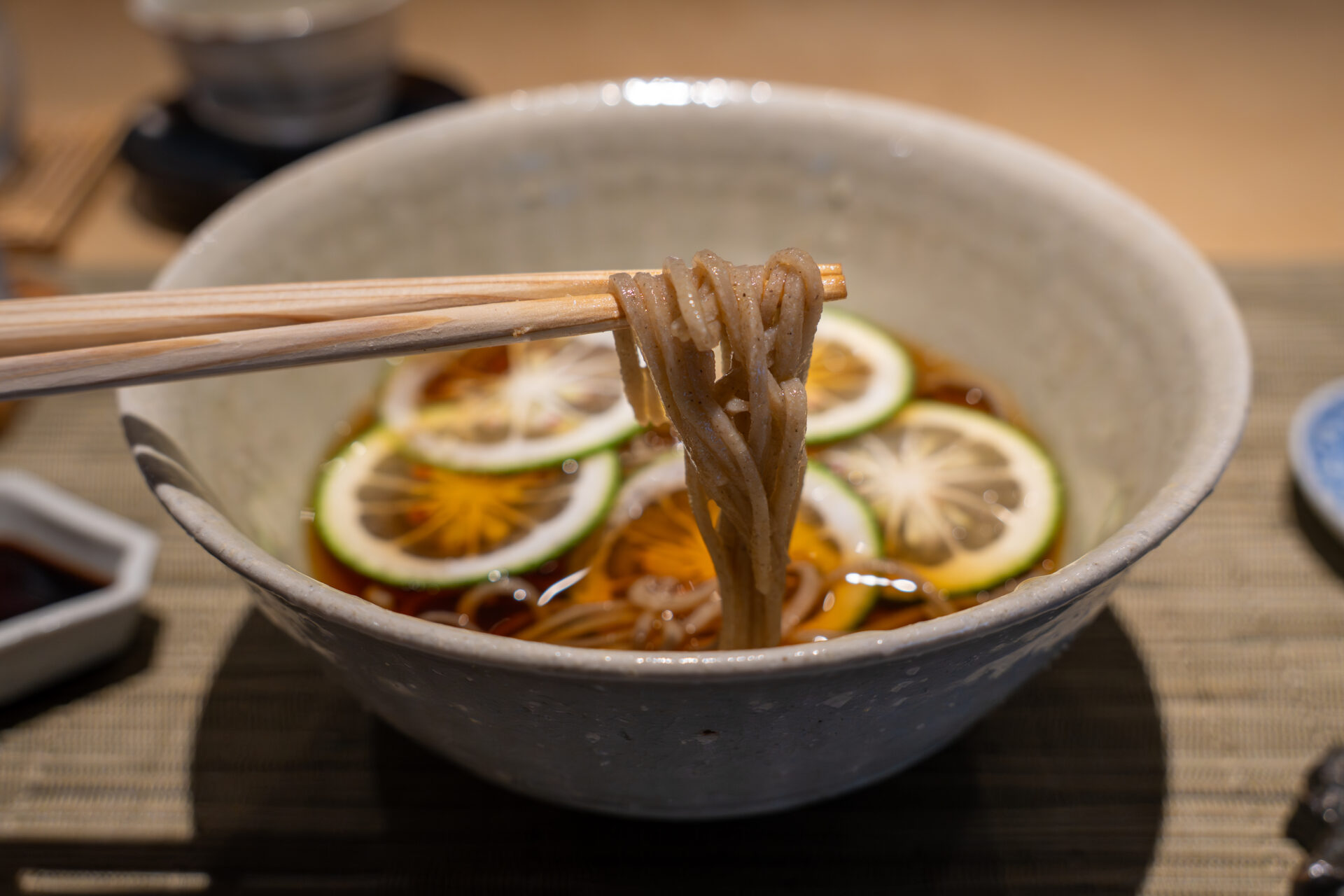
Oni-sazae (Horned Turban Shell)
Oni-sazae is a carnivorous shellfish with spiky protrusions true to its “demon” name. Because it feeds on other shellfish, its flesh is packed with dense umami. One bite brings ocean aroma and a firm chew, yielding sweetness and layered richness as you continue. Rarely seen in markets, it was a “you can only have this here” dish that stood out.
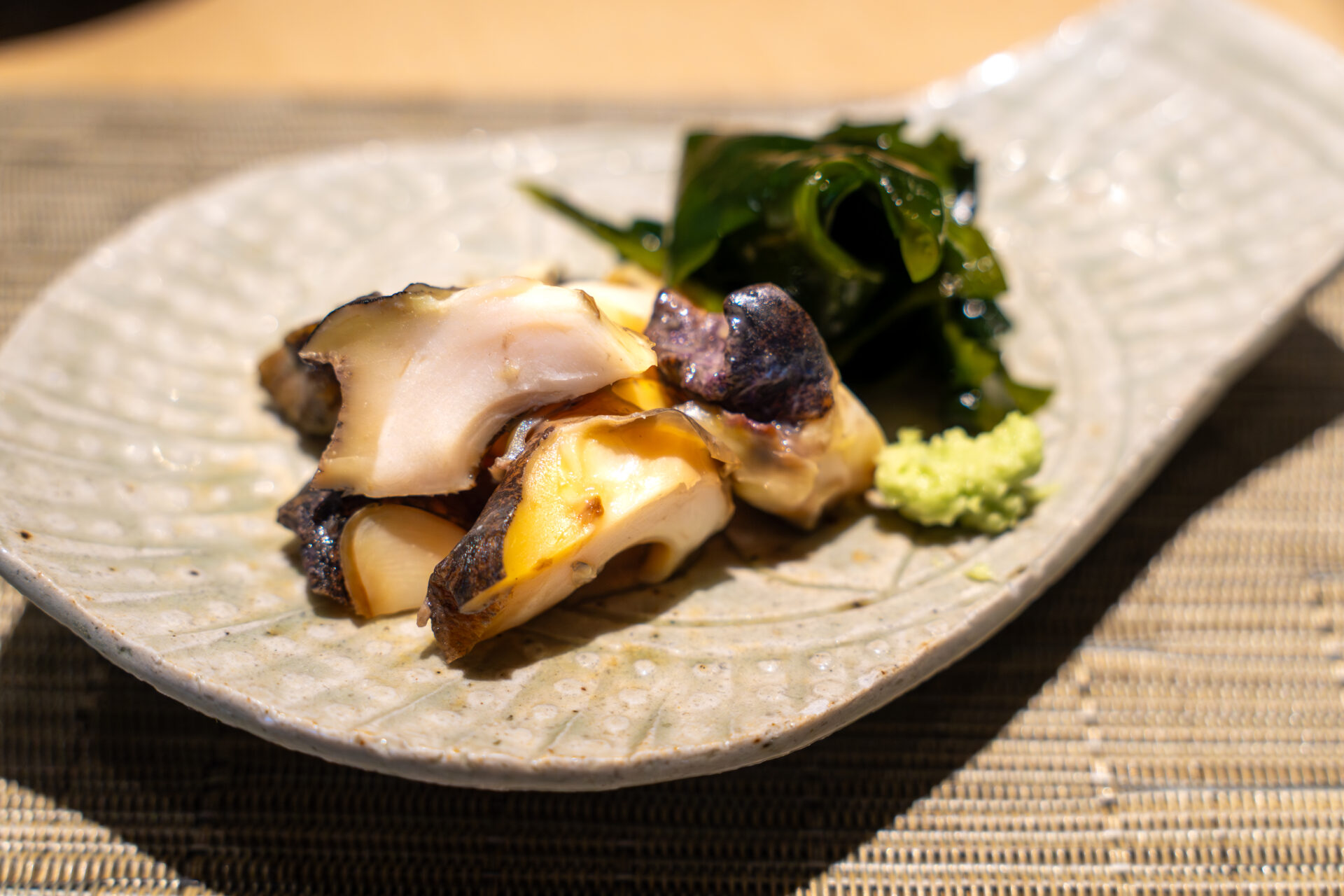
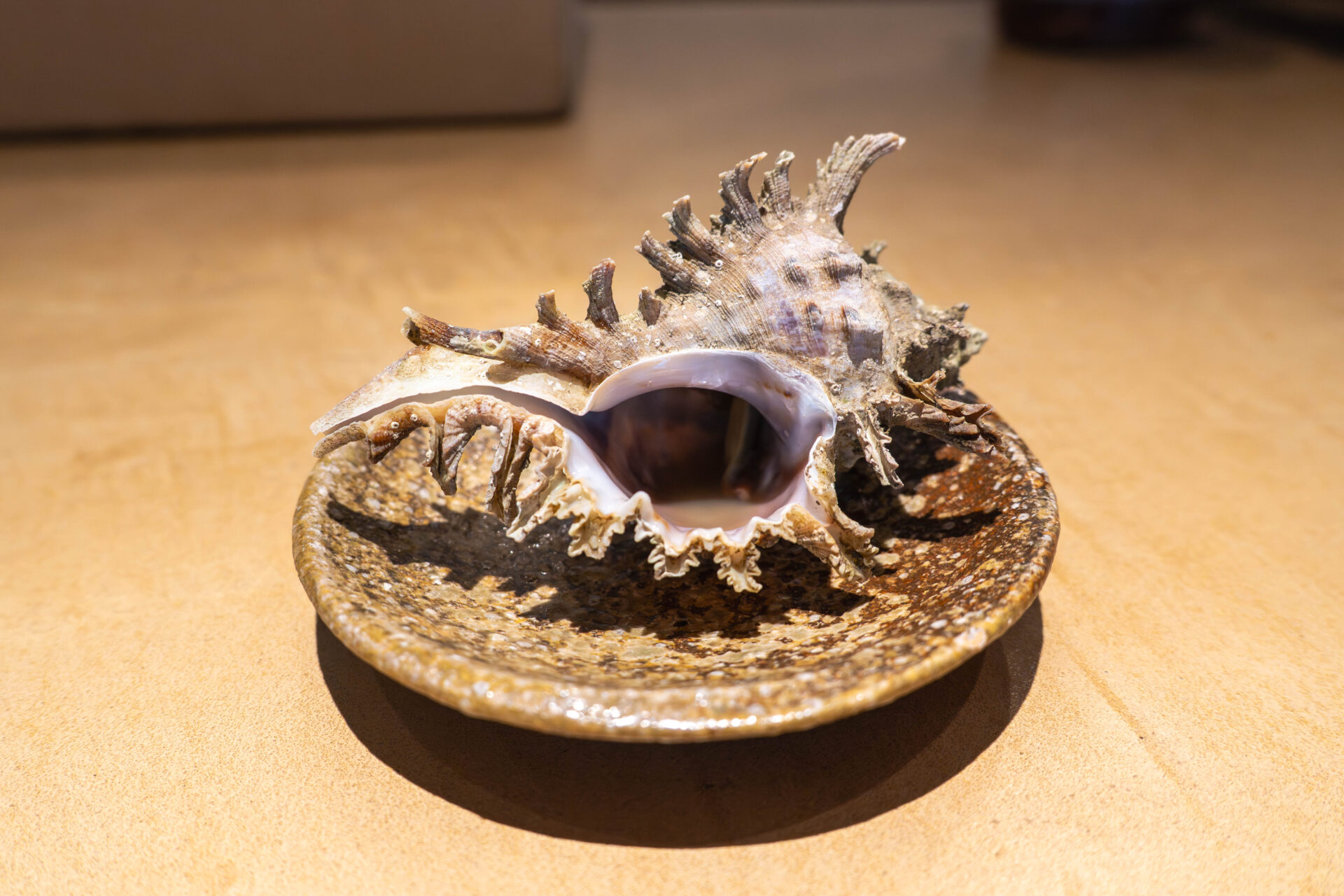
Gejang
One of the restaurant’s specialties: gejang (Korean marinated crab). The meat is cleanly removed from the shell for easy eating, with a bouncy texture and a rush of concentrated umami as you chew. A sweet-spicy yet mellow seasoning highlights the crab’s flavor and spreads gently across the palate. The juices are packed with savoriness—great on their own, with rice, or with sake. A powerful yet delicate dish that showcases careful craftsmanship.
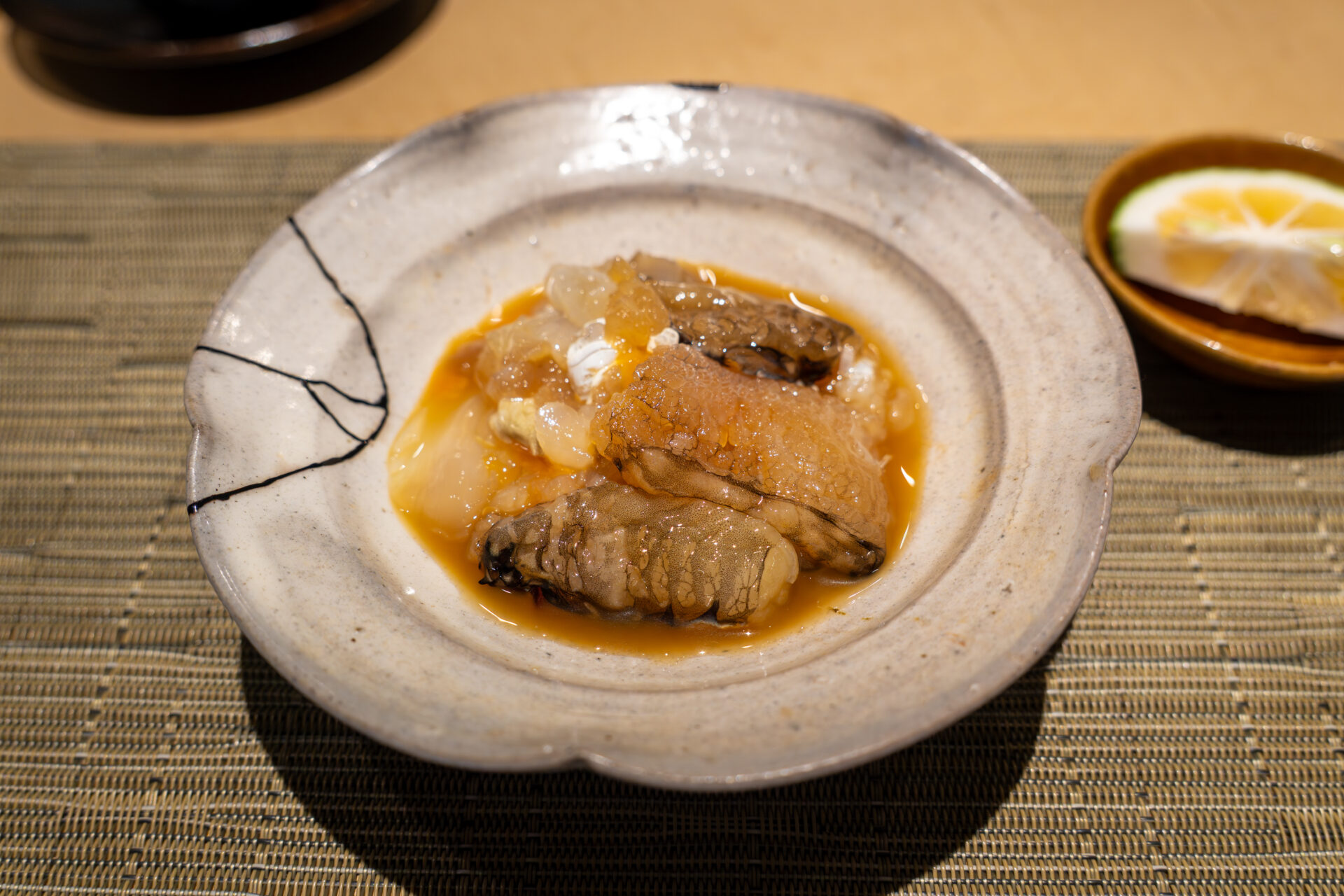
Sashimi
A selection of oni-okoze (devil stinger/stonefish), baby kō-ika (cuttlefish), and kasago (rockfish). The chef, who goes fishing and to auctions himself, once devoted himself to the “Tsumoto Method,” but eventually came to cherish the unique aromas of sea and river and the iron taste of blood—now valuing the character of each fish and its environment. The sashimi reflects that thought: crystalline flesh, umami that unfolds with each bite, and textures that showcase each fish’s individuality.
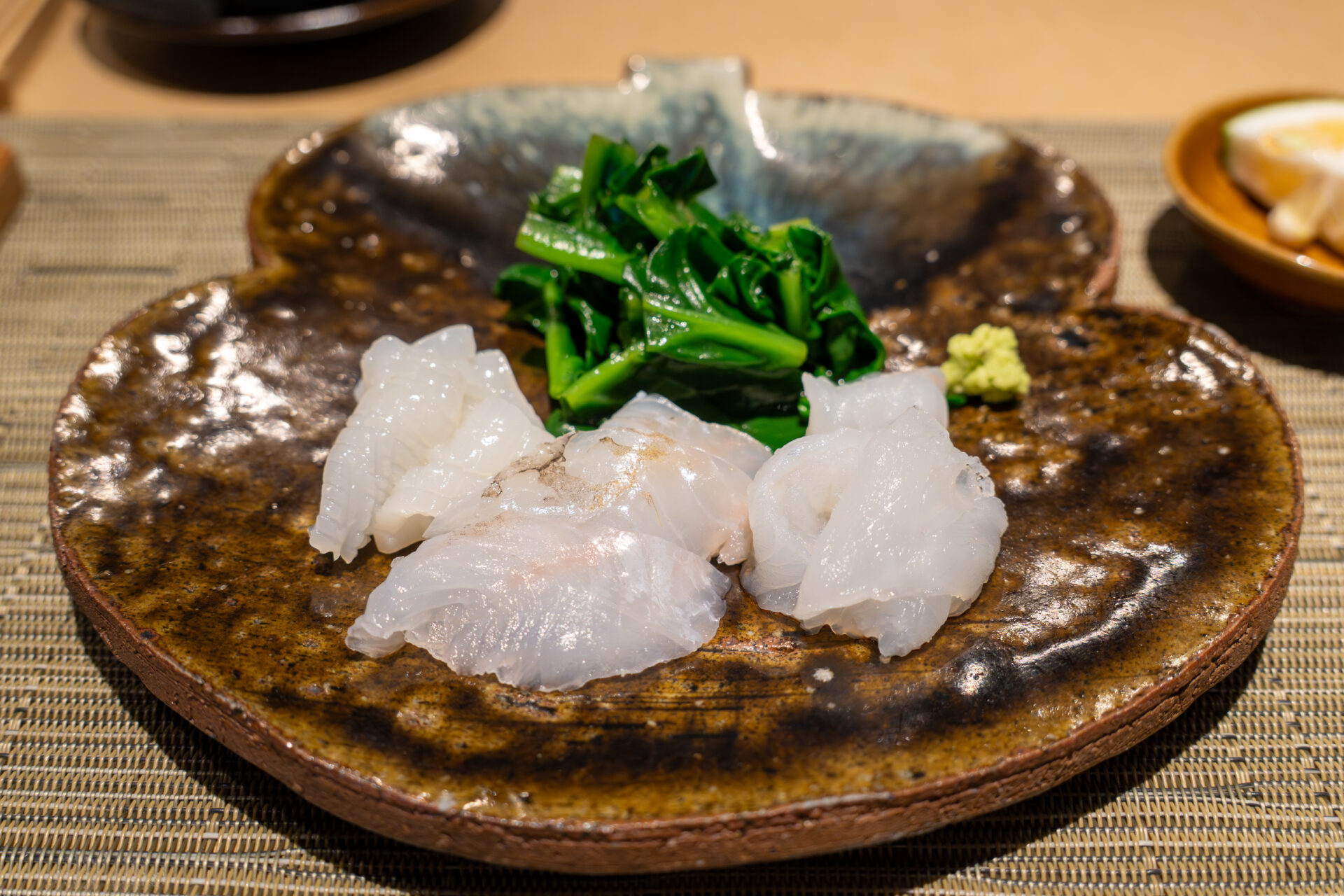
Lightly Blanched Japanese Whiting
An exceptional kis (Japanese whiting) landed by fishers on Himeshima using a method locally called “Kisugochi” (a type of set drift gillnet). With ocean currents and fishing conditions aligning, the flesh is beautifully translucent with substantial thickness—an extremely rare state to encounter. Here it’s lightly blanched (yubiki), sealing in umami while preserving clarity and tenderness. With condiments, a subtle sweetness and elegant sea aroma bloom—luxurious.
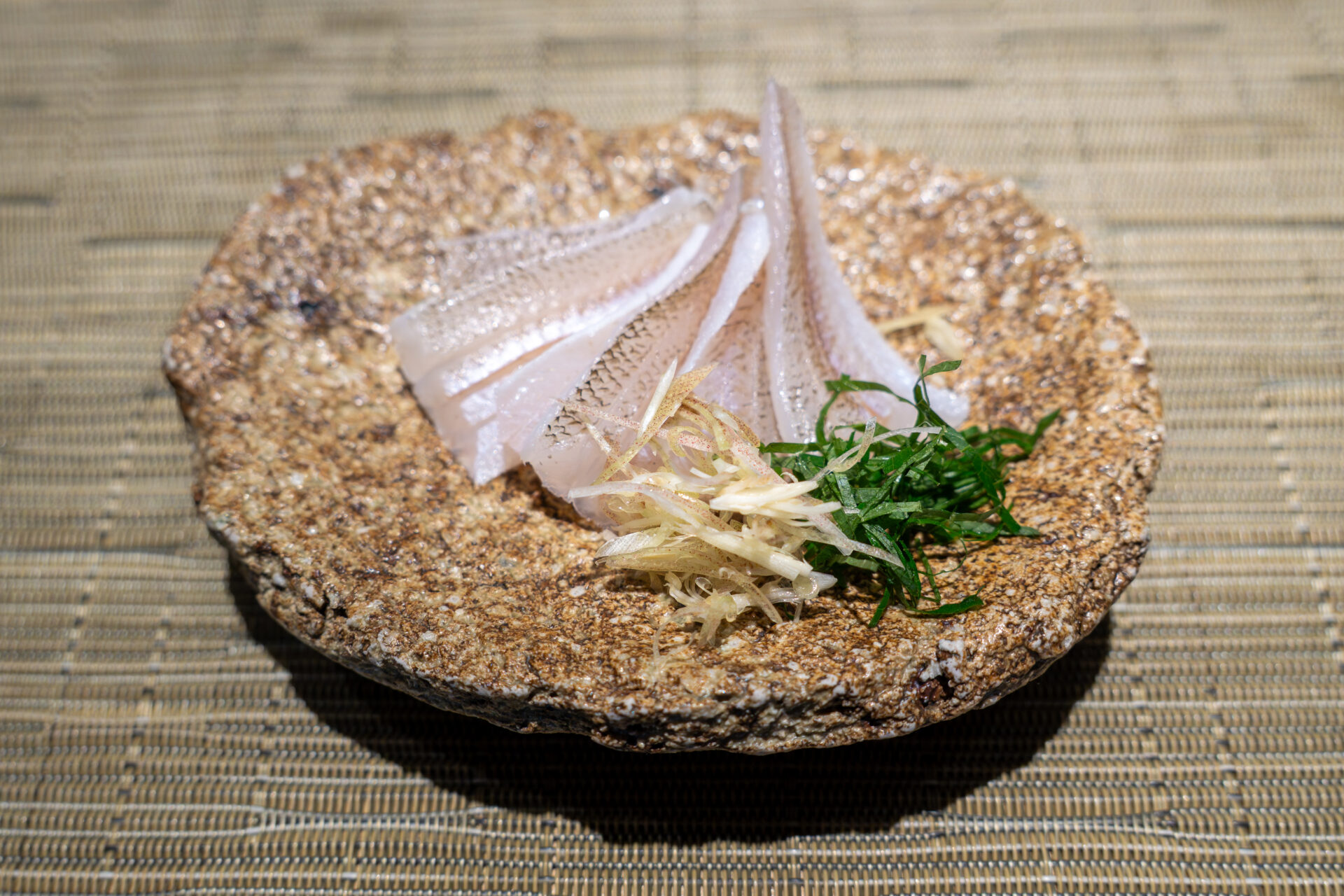
Main Soba
The climax of the meal was a soba that truly shocked us.
It’s a high-hydration juwari soba (100% buckwheat) in the “Shin-soba-ryū” style, taught directly to the chef by Mr. Hasegawa of “Fukagaya Food” in Gifu.
Despite being 100% buckwheat, it’s both moist and supple, with the aroma and sweetness of buckwheat unfolding gently as you chew. The freshness characteristic of the high-hydration method heightens the moment the noodles fall apart on the tongue, leaving a rich aftertaste.
The chef offers a simple suggestion: “Try it with salt.” A pinch of salt sharpens the noodle’s sweetness and umami, bringing the flavor into crisp focus.
With each bite, it “reshapes what soba can be,” drawing out the very best of buckwheat.
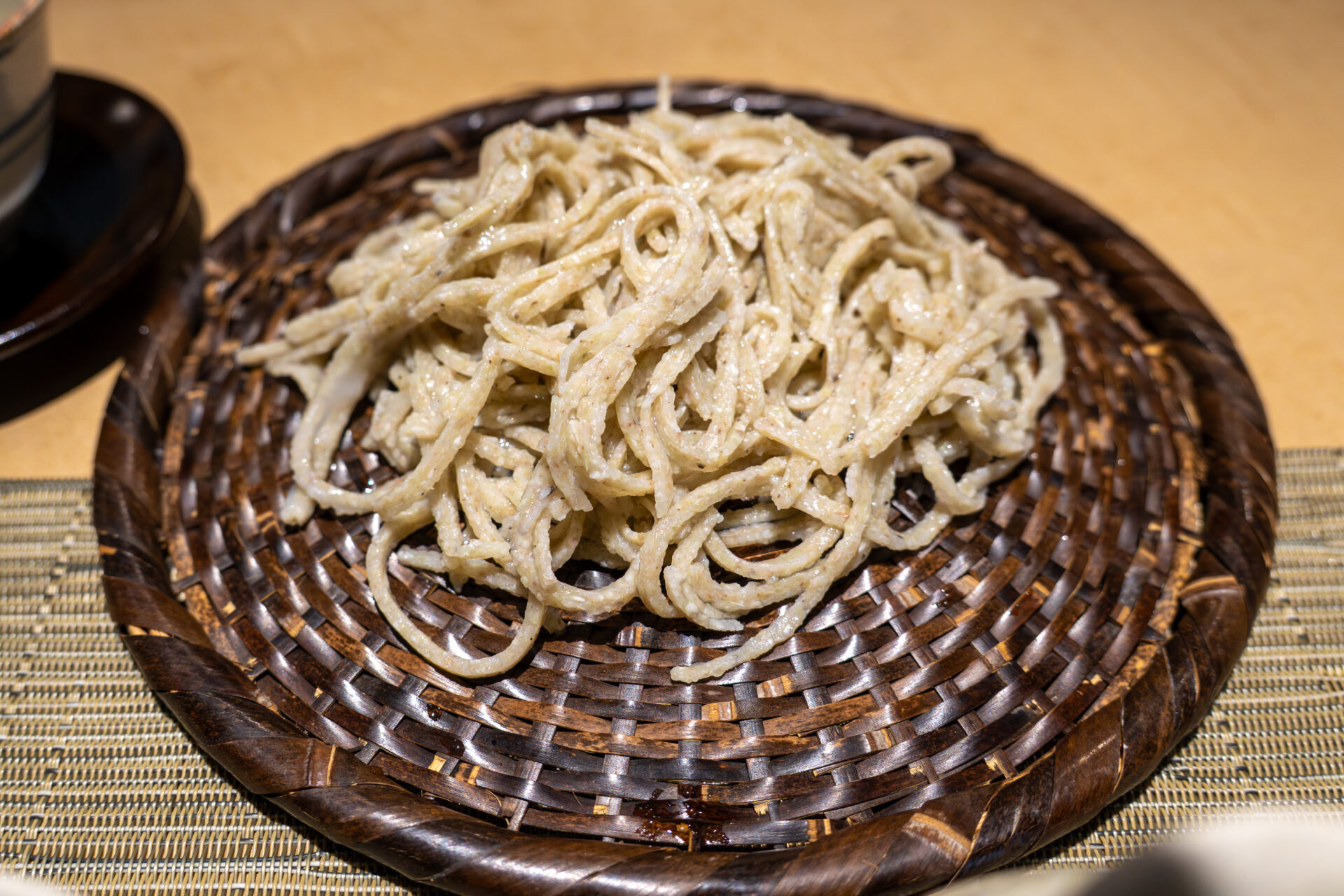
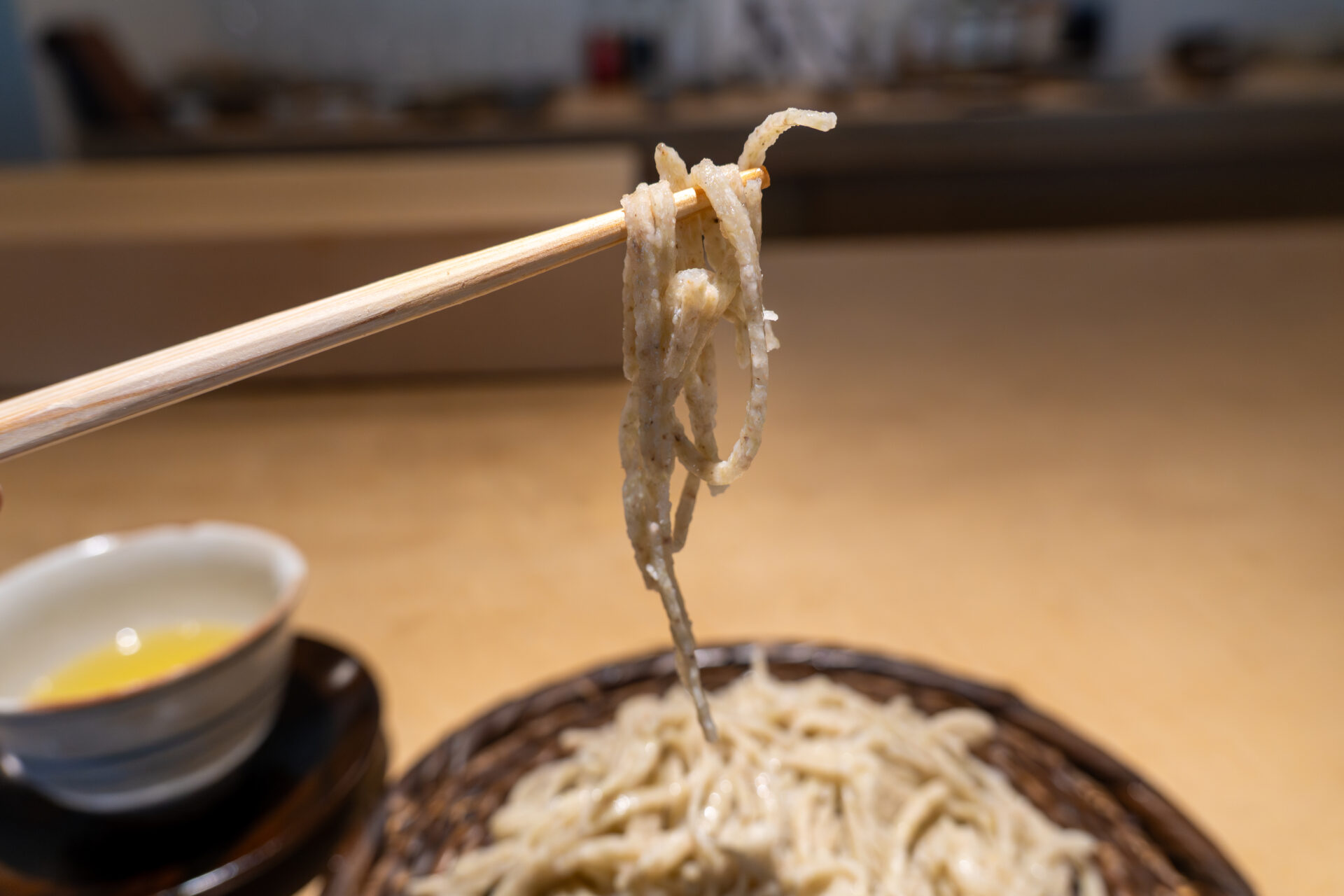
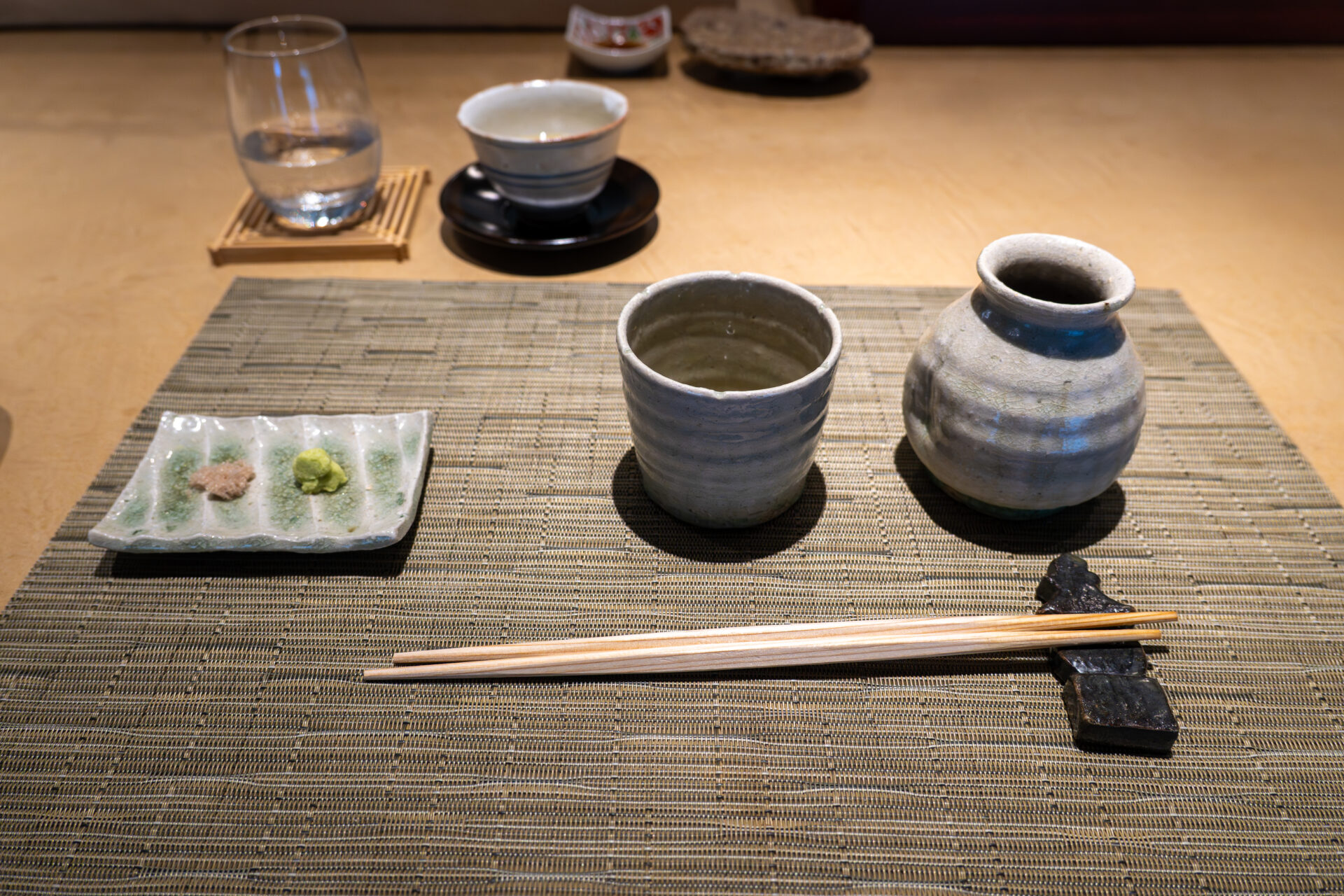
Finely Milled Soba
The finely milled soba is defined by its uniform, silky texture; it slips smoothly down the throat. As you chew, a refined buckwheat aroma gently blooms—clean and free of off-notes. The accompanying dipping sauce has a vivid katsuobushi fragrance and umami that makes you want to drink it. First, try it with just salt to taste the flour itself; then dip in the bonito-scented sauce and you’ll find layered aromas and synergistic savoriness. By the last bite, a pleasant soba afterglow lingers—you’ll want another plate.
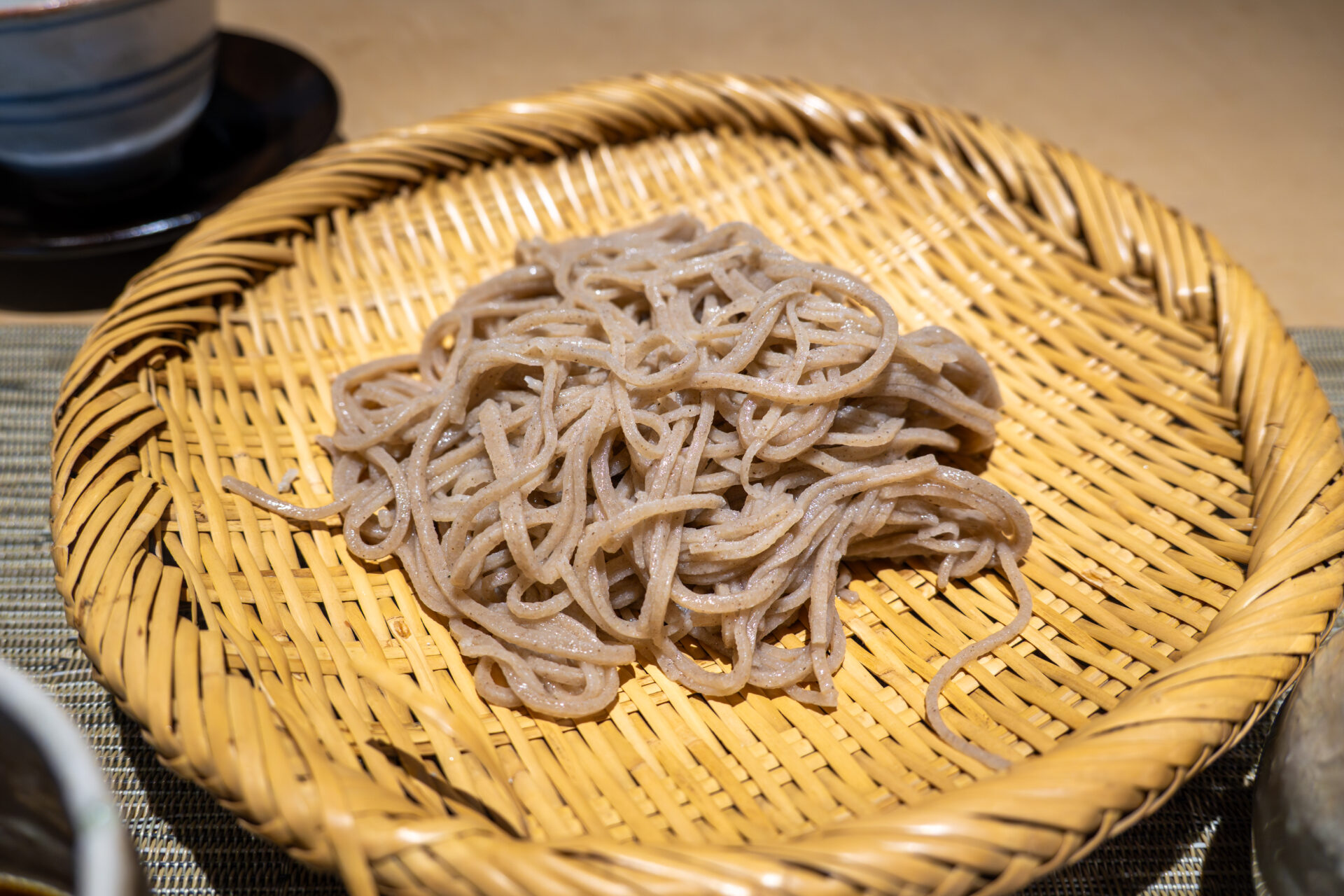
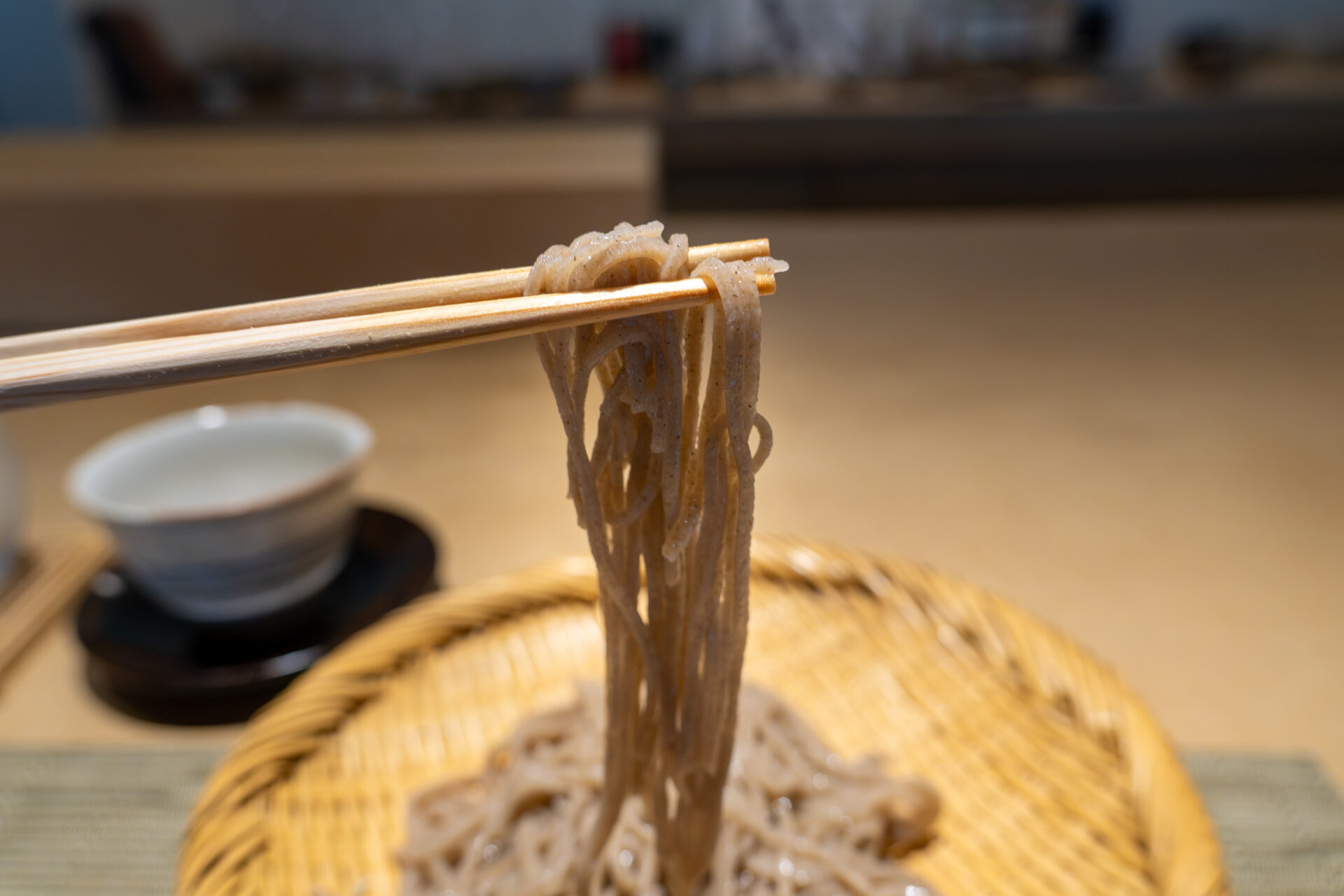
Coarsely Milled Soba
As a second serving, the coarsely milled soba arrived.
The moment it was set on the zaru, the grainy look and rich aroma drifted up—powerful in a way quite different from the fine grind. Each bite breaks apart hull and grain, spreading toasty notes and cereal sweetness. The aromatic finish is long, with a pleasant fragrance that lingers.
With salt, the simple, toasty umami comes through directly; with the dipping sauce, the katsuobushi’s rich aroma layers onto the soba for deeper complexity. The chew and aromatic strength unique to a coarse grind are sure to captivate soba lovers. Offering a second helping like this lets you enjoy how grind size alone transforms texture and aroma—an elegant touch.
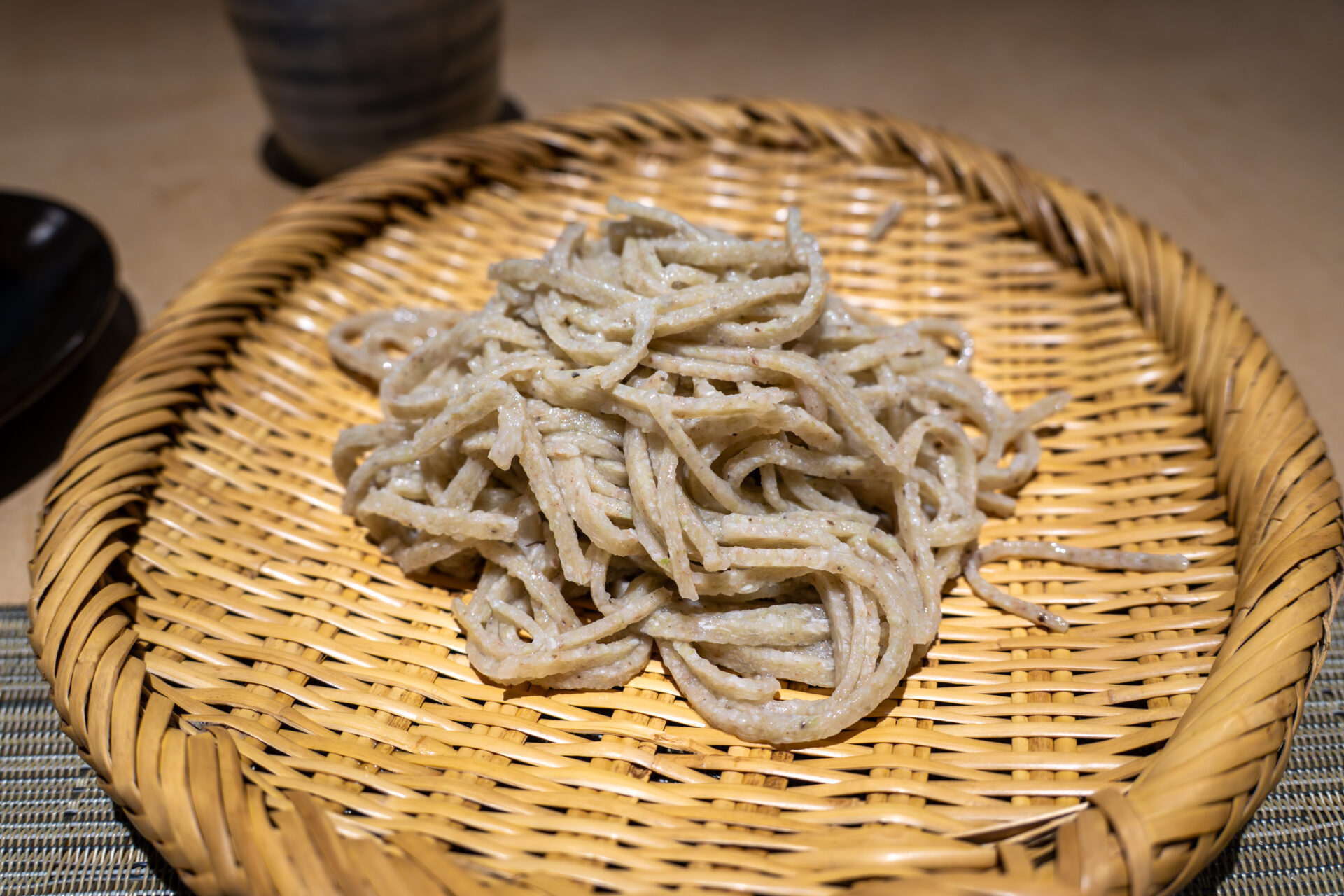
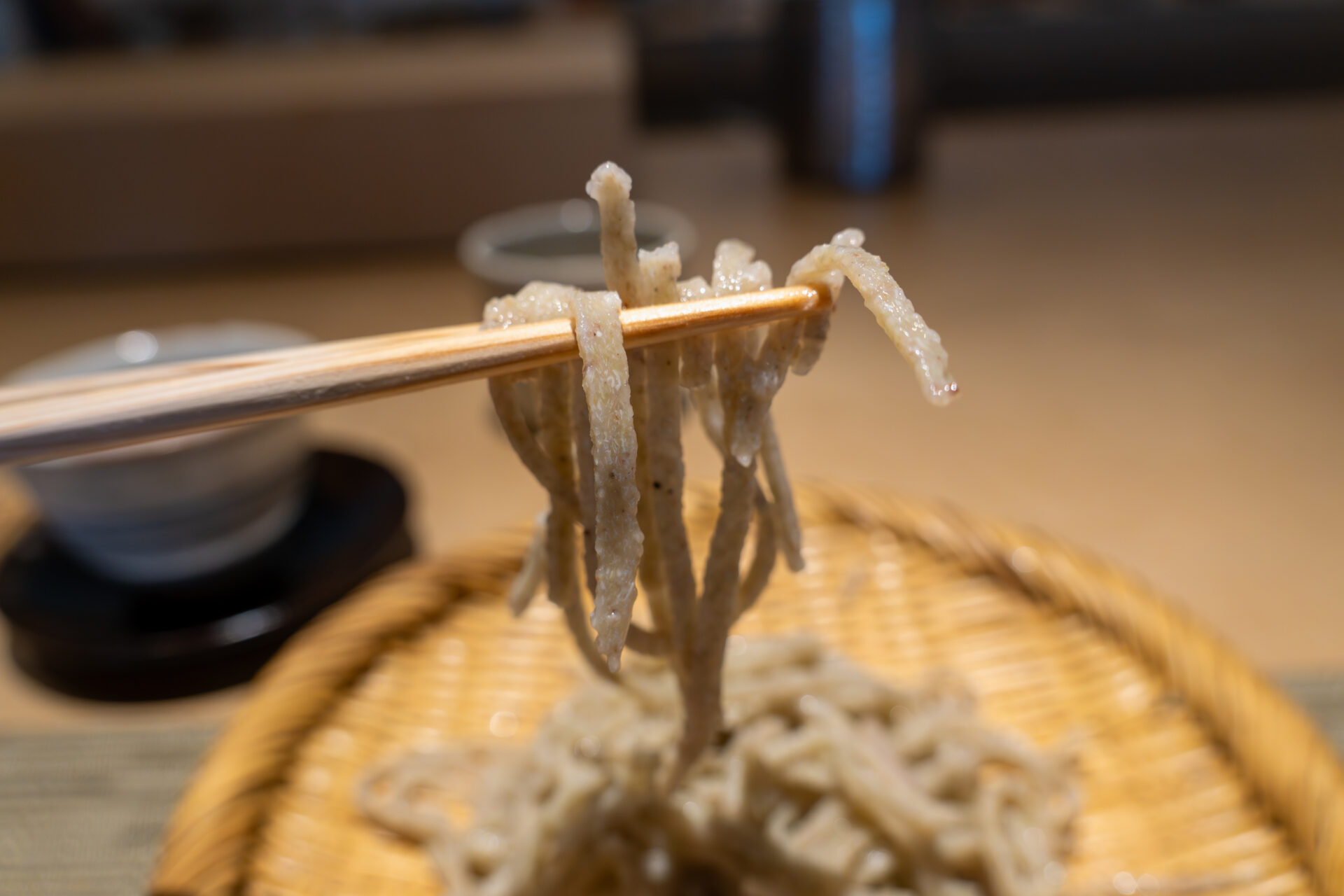
To Finish: a Comforting Cup of Soba-yu
The nutrients and aroma leached into the cooking water rise gently with the steam. In the mouth, a soft viscosity carries buckwheat sweetness and toasty notes that spread and warm you deep down. The afterglow from both fine and coarse soba is wrapped kindly in this one cup.
It’s a final little reward that lets you linger in the world of soba to the very end.
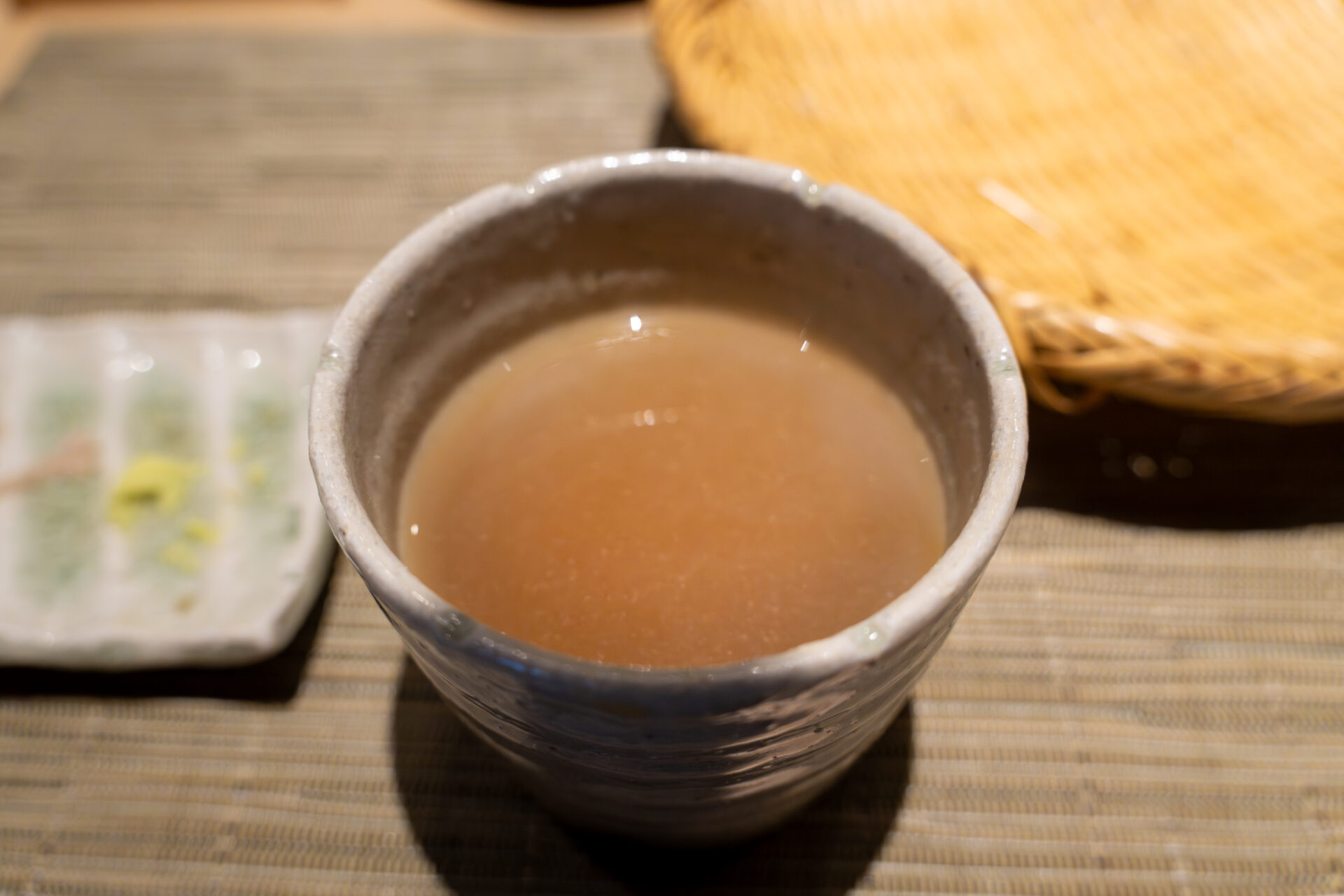
Summary & Impressions
Our time here felt like quietly absorbing the chef’s very way of life—not just the flavors of soba and the dishes.
The high-hydration juwari soba learned from Mr. Hasegawa of Fukagaya Food in Gifu holds the chef’s tactile sense in both the clarity of the fine grind and the power of the coarse; whether with salt or sauce, its contours shift with every bite. The more refills you have, the deeper you are drawn into this world.
Fish and vegetables alike—he goes out to fish and to auctions, helps farmers, and sometimes even grows his own soba and rice. That daily accumulation is reflected directly on the plate.
At first glance, the cooking seems quiet and restrained, but the more you learn about the background, the more clearly you sense the heat and feeling within the flavors.
This is a place to eat soba, yes, but also a place to taste the time and care the chef has chosen and invested whole.
Its depth is impossible to grasp in one visit—you’ll want to return in another season to confirm what you felt.
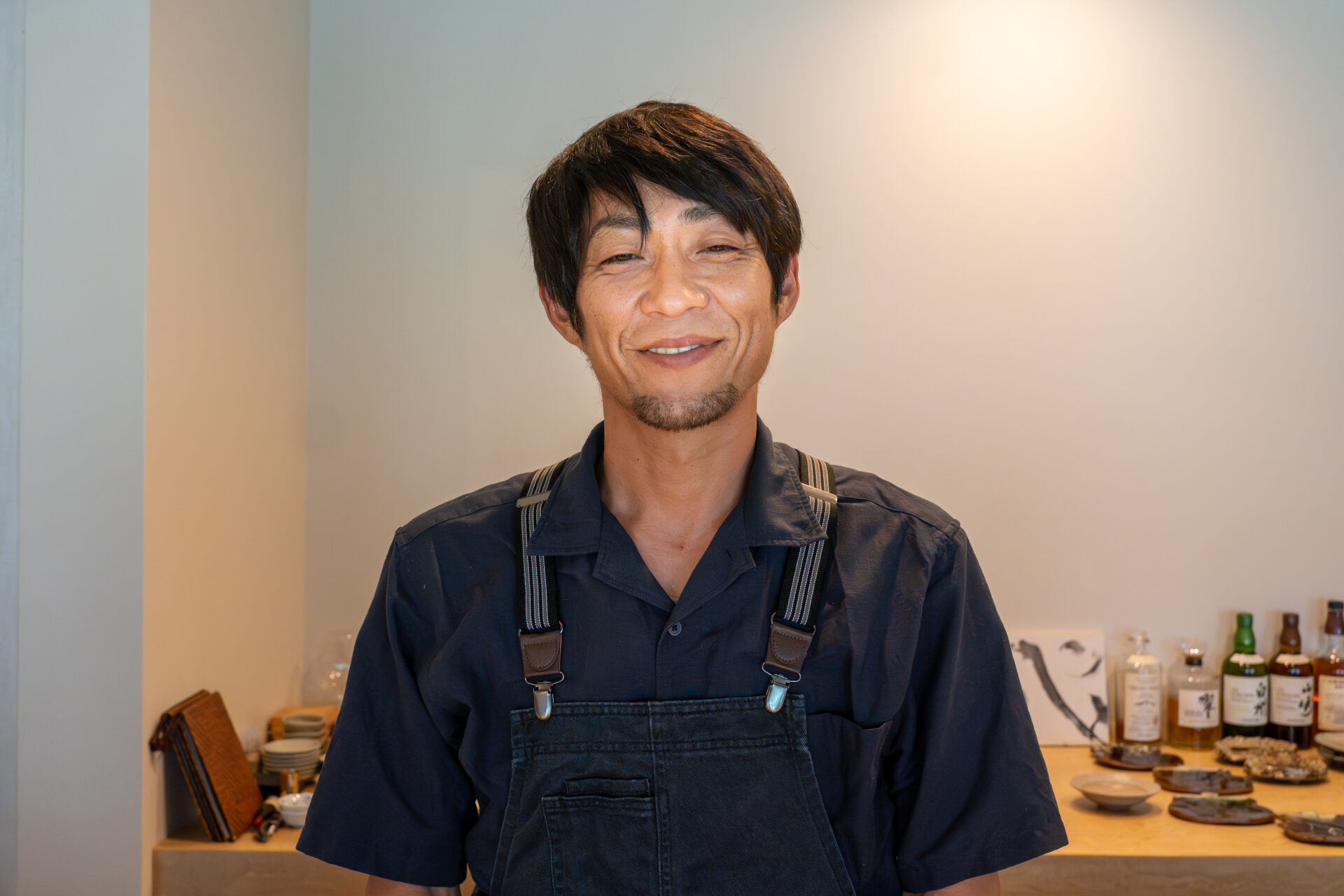
Reservations & Access
How to Book
“Soba Rikugō” is reservation-only; you must book by the day before. Information is announced on official social media like Facebook and Instagram, and reservations are taken by phone (0978-25-4336). Start times are fixed for lunch and dinner. Lunch is for 1–4 guests; dinner is for 1 guest or 2–4 guests within limited slots only. Bookings are accepted up to two months ahead, but given the small number of seats, earlier contact is best.
Hours & Regular Holiday
| Item | Details |
|---|---|
| Business Hours | 12:00–last start at 19:00 |
| Latest Start Time | 19:00 is the latest slot |
| Regular Holiday | Irregular |
Access
| Item | Details |
|---|---|
| Address | 4508 Tashibuosaki, Bungotakada-shi, Ōita |
| Nearest Station | About 3.8 km from Tateishi Station on the JR Nippo Main Line (reach the restaurant on foot or by car from Tateishi Station) |
| Parking | Available |
- TAGS

